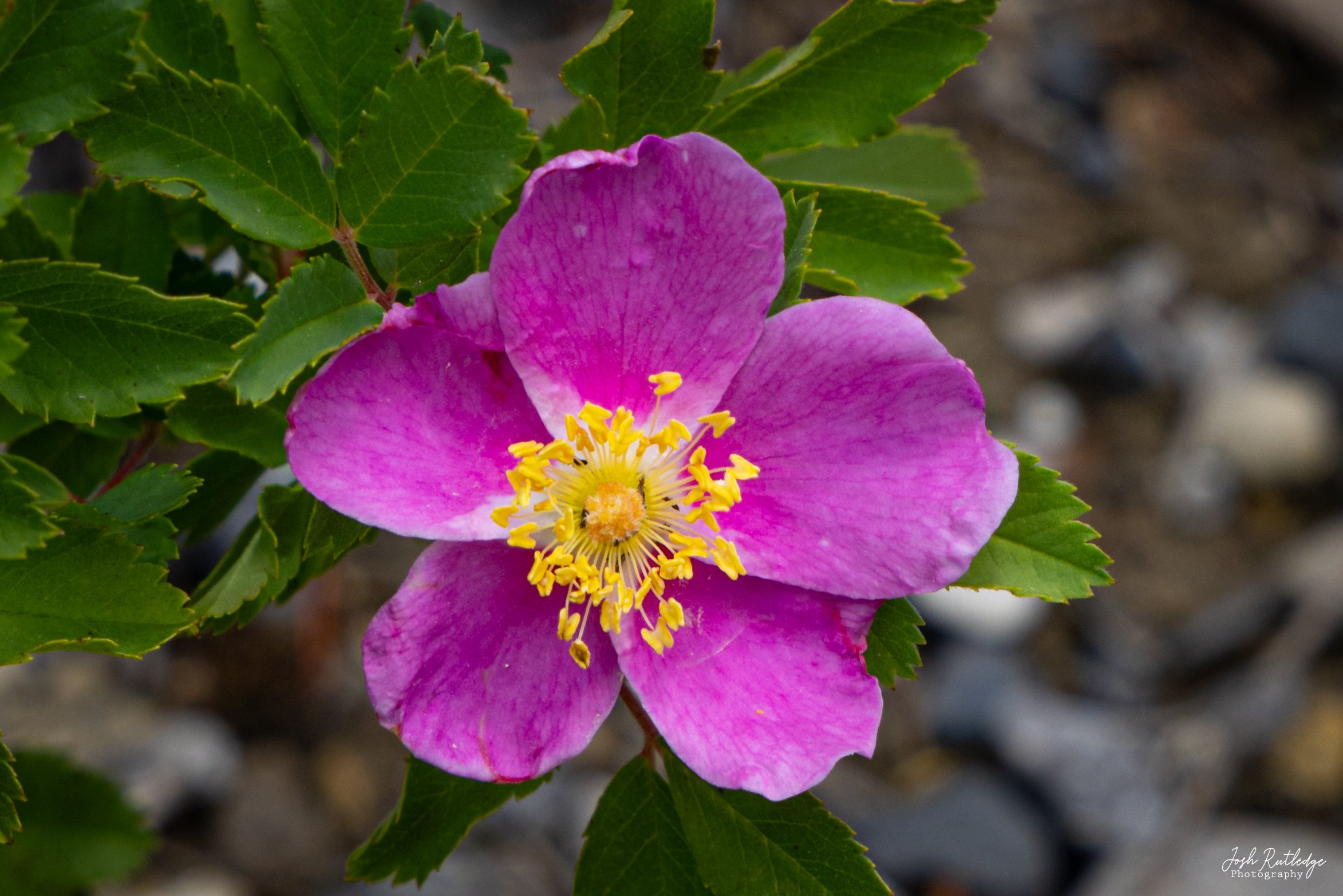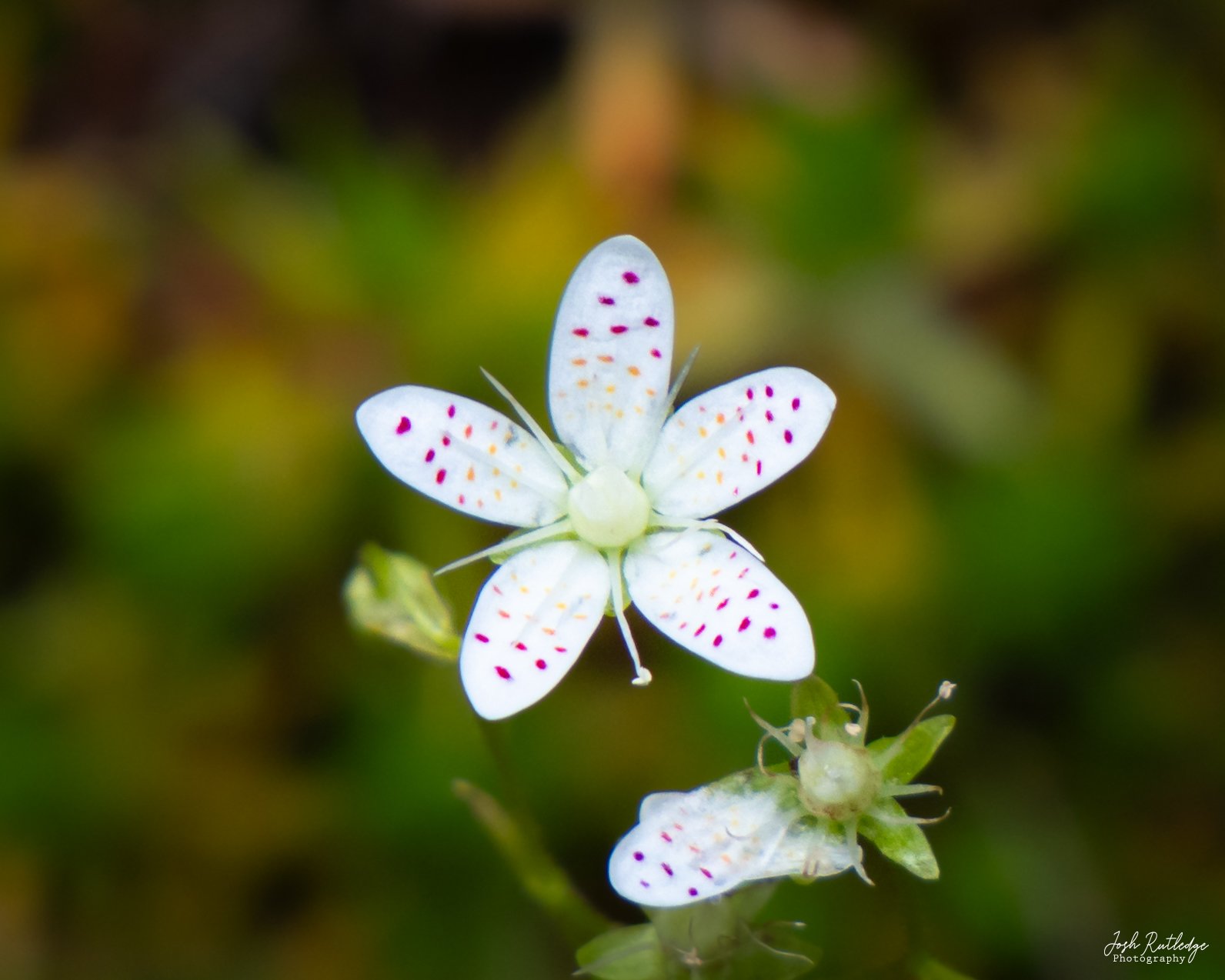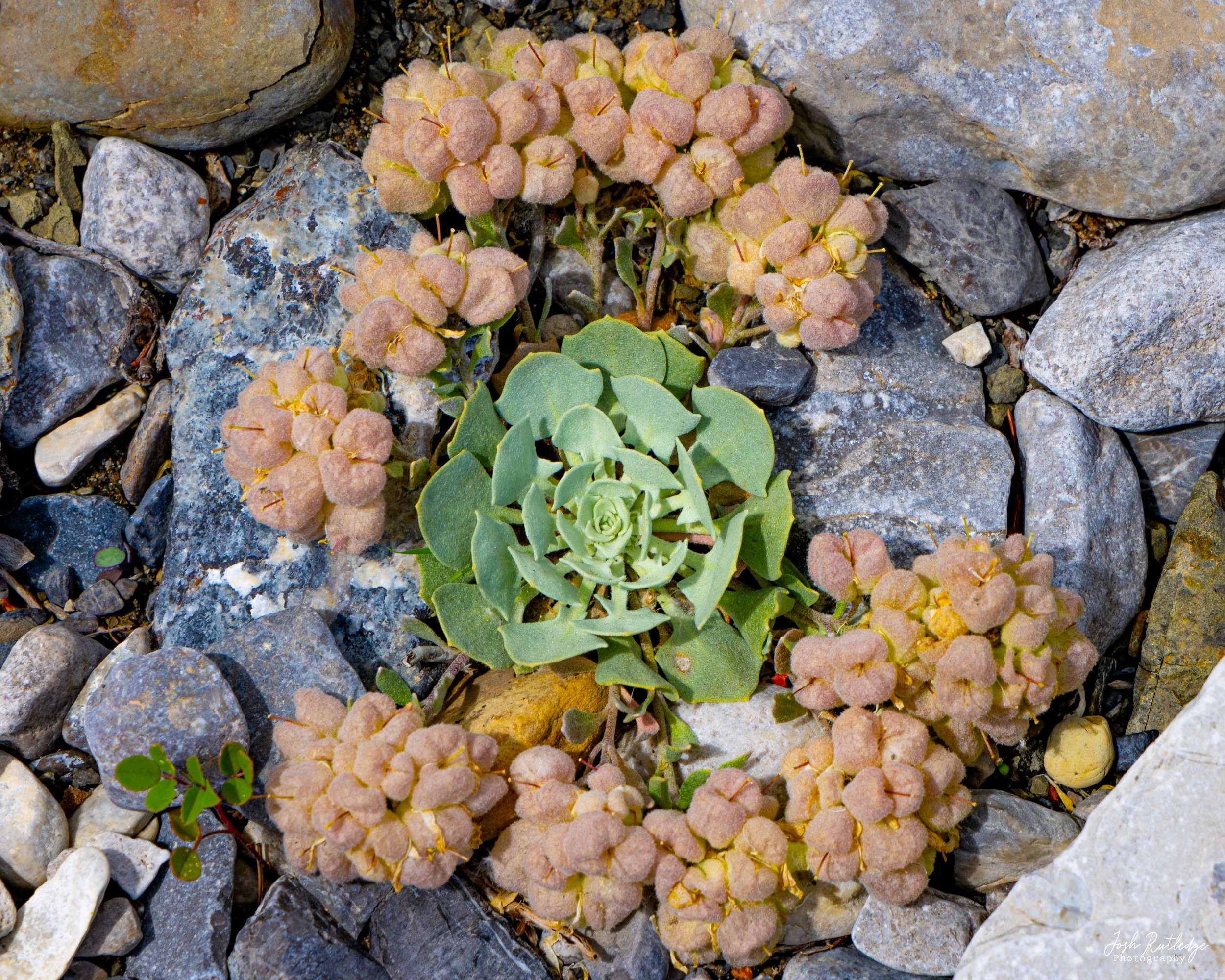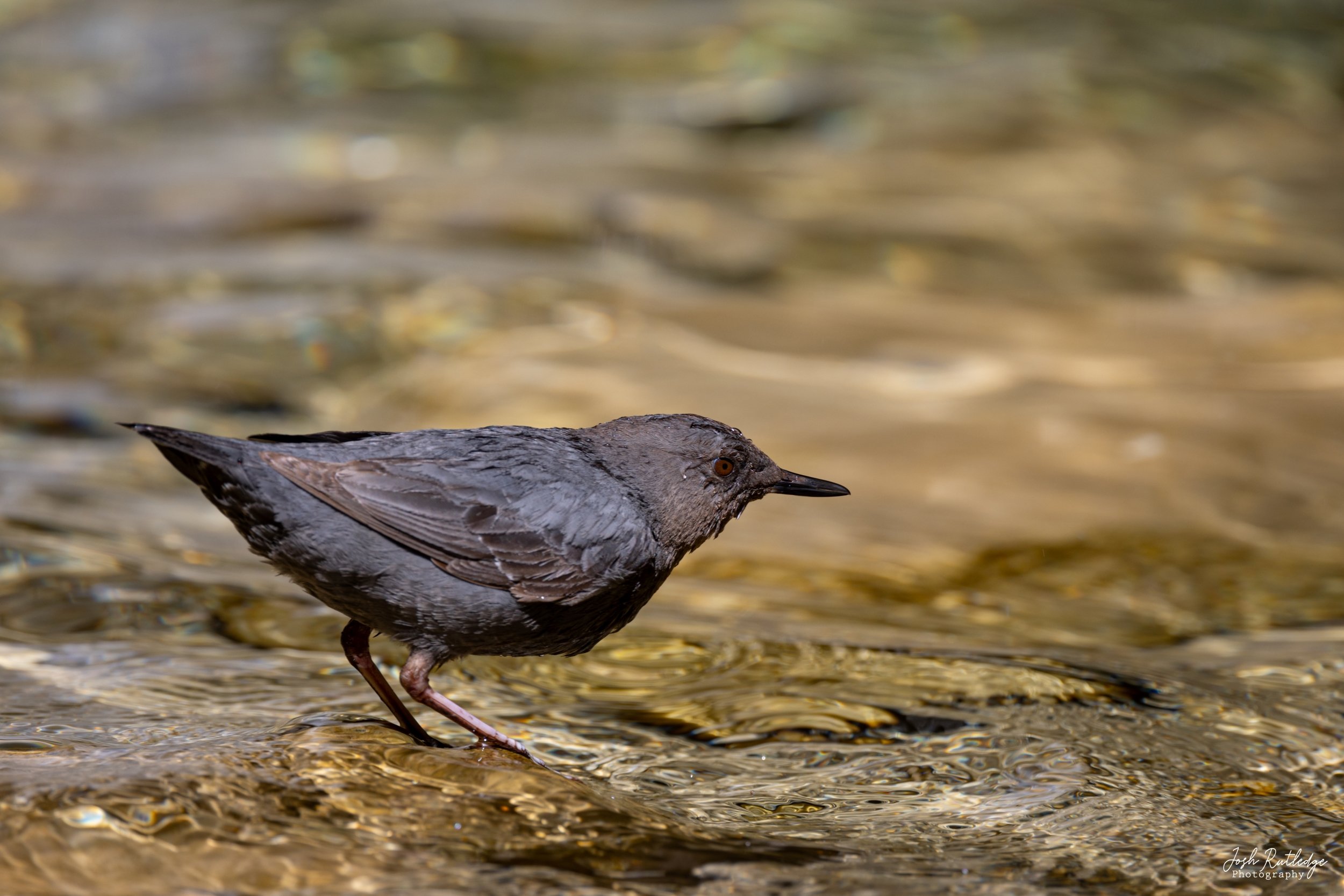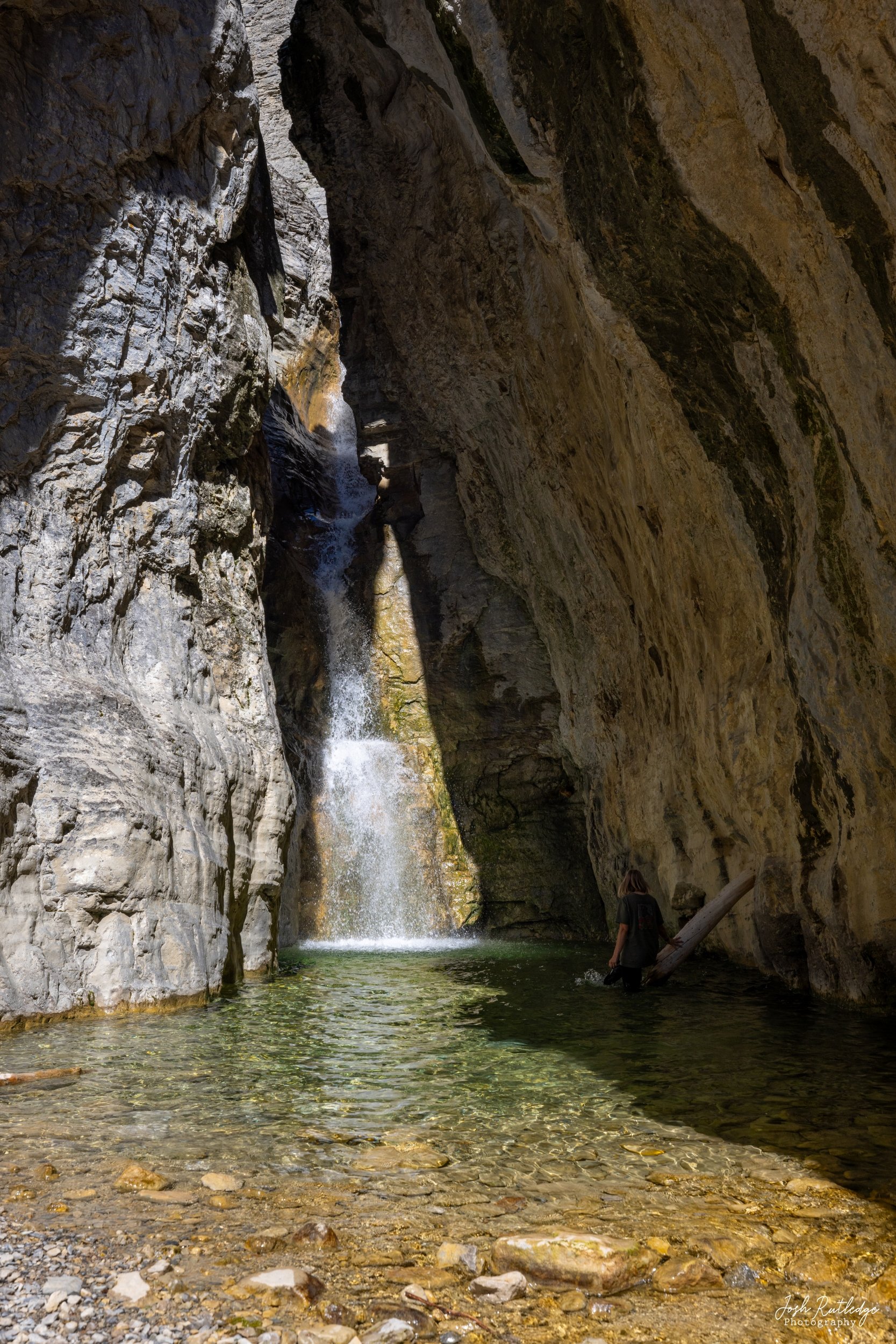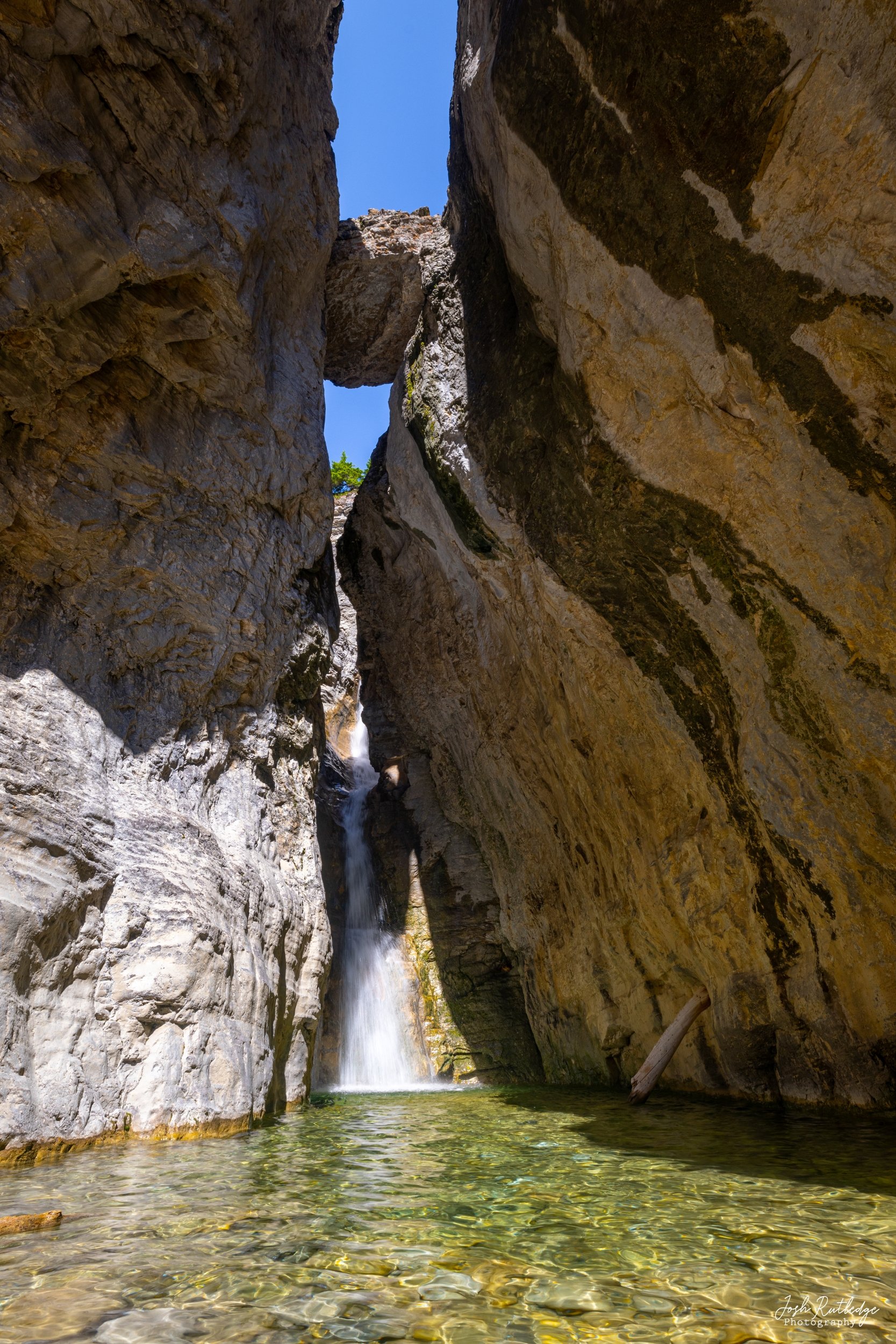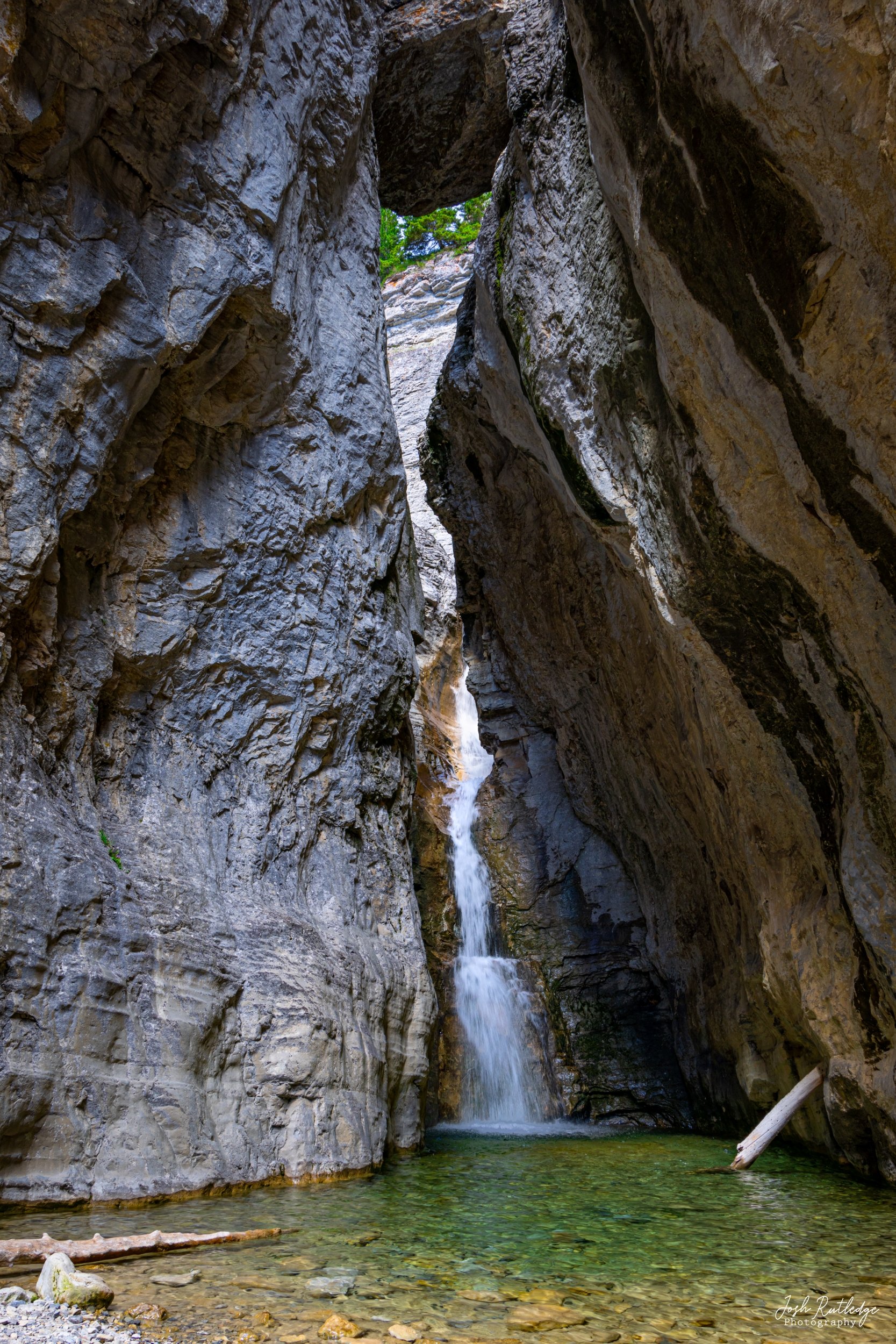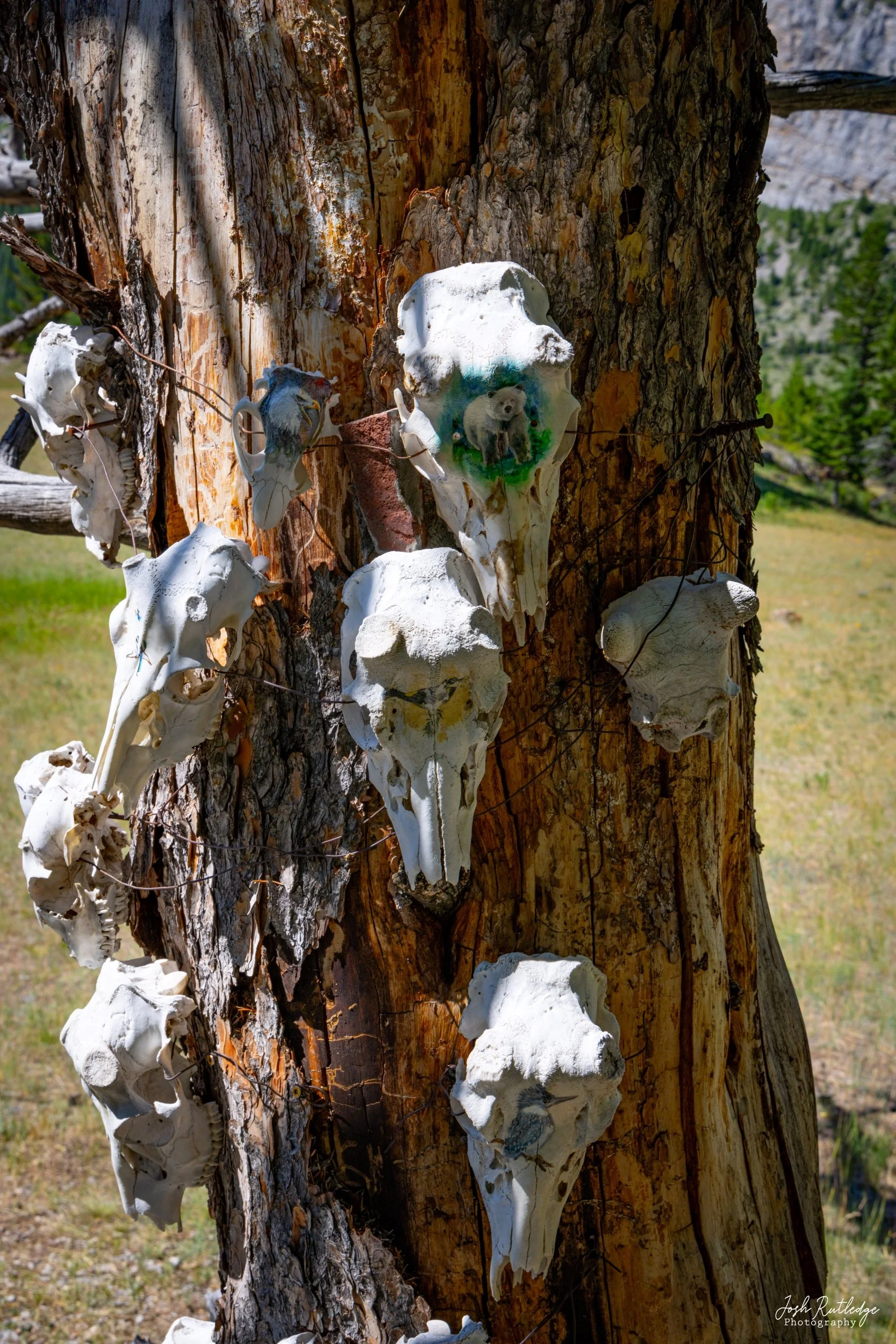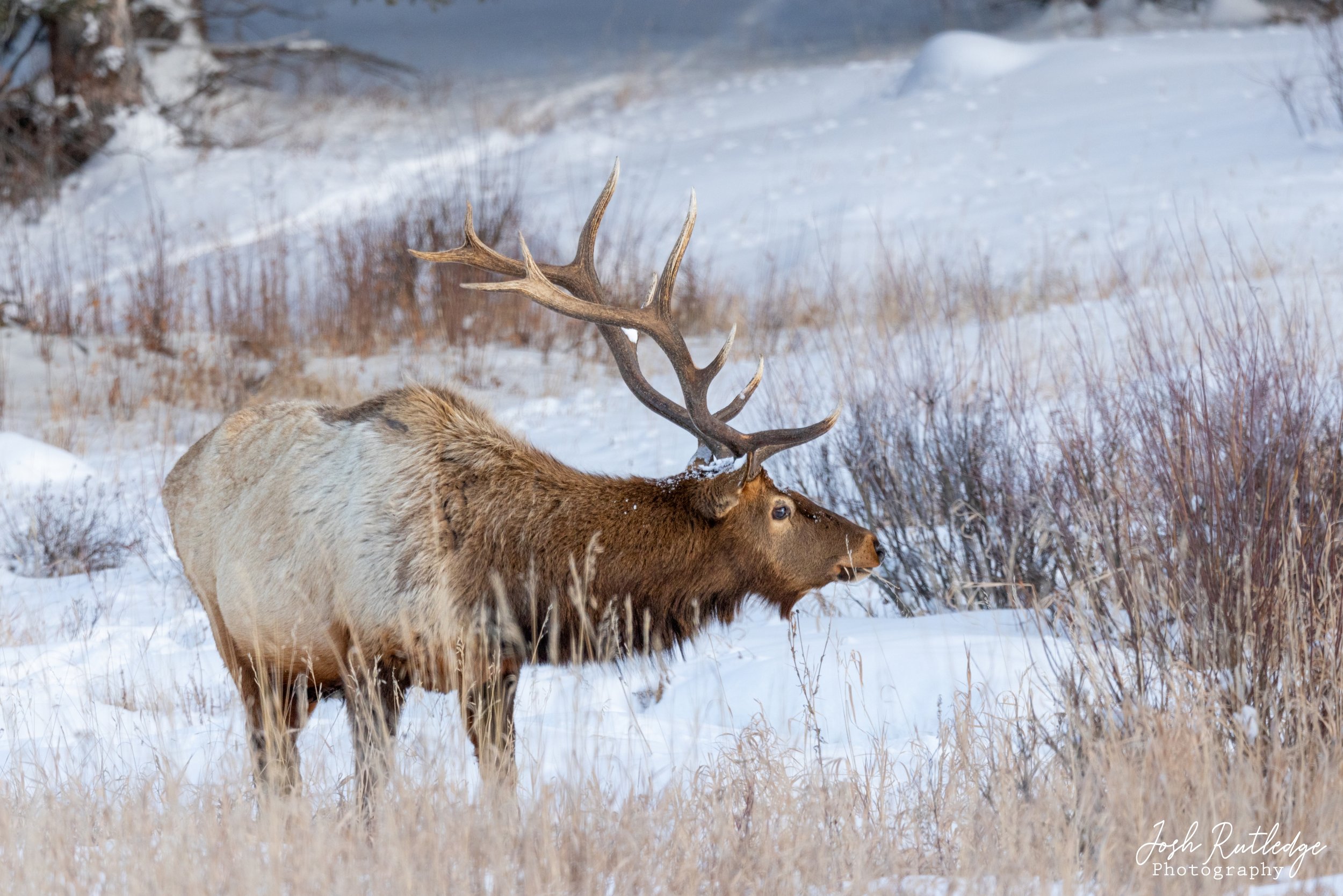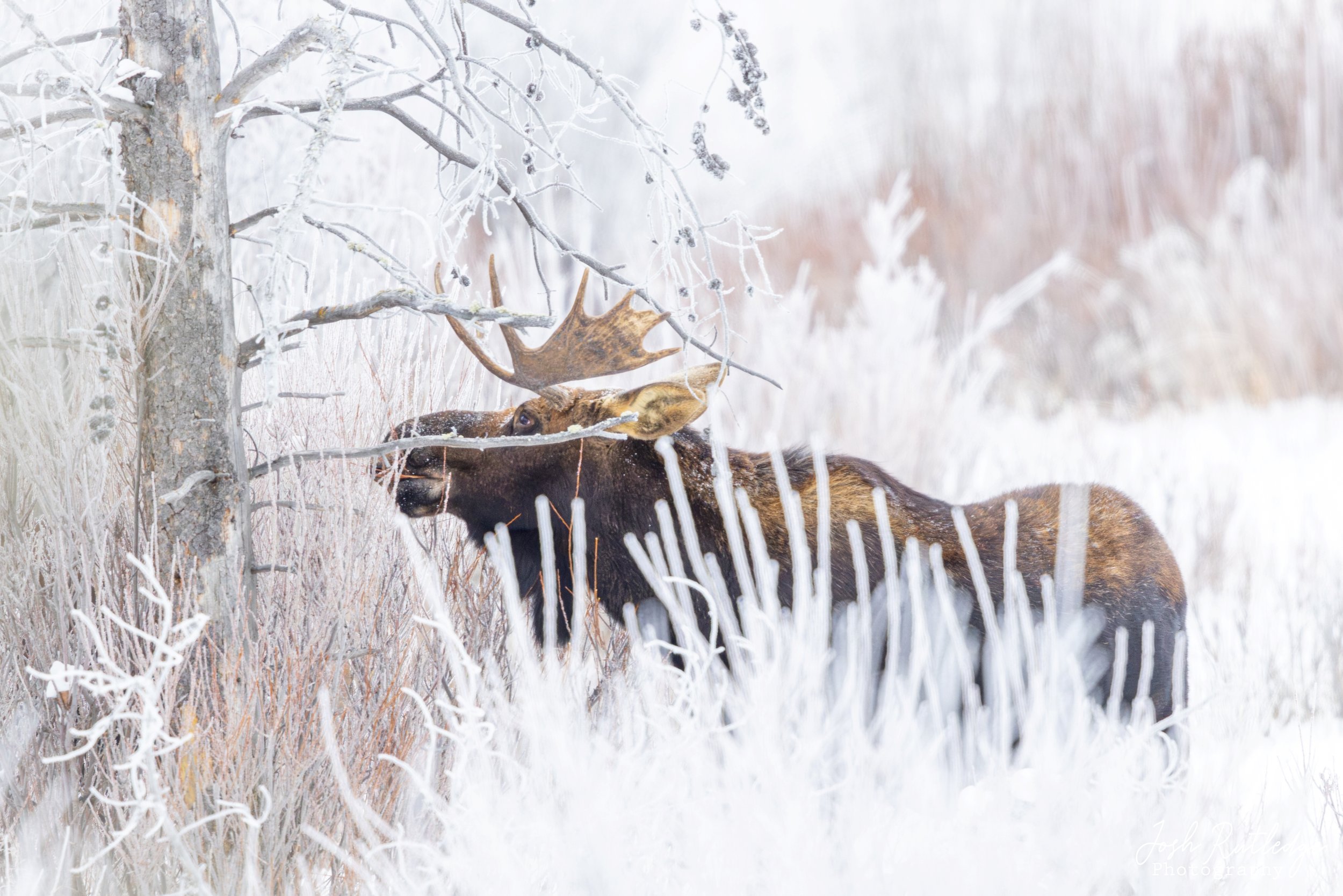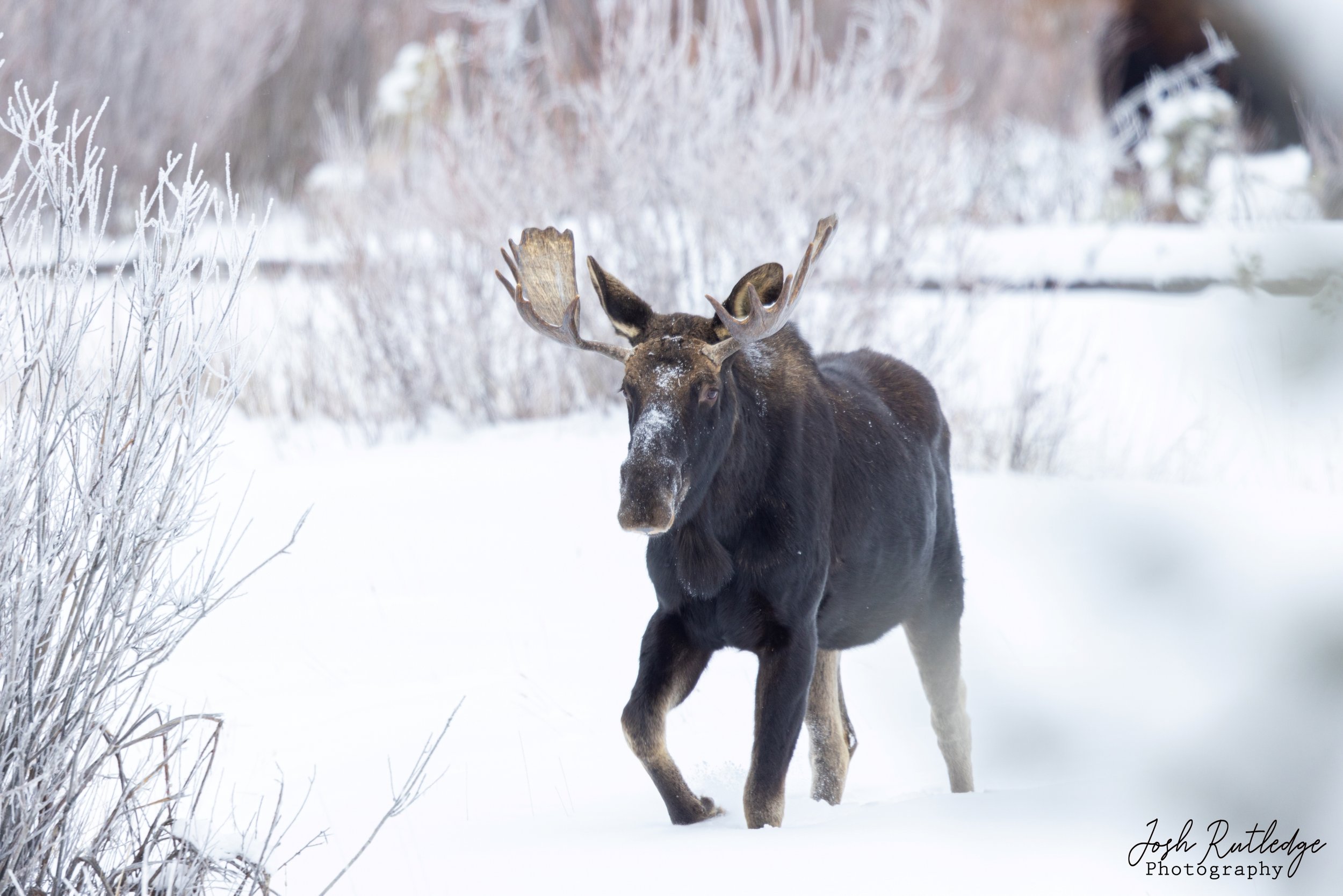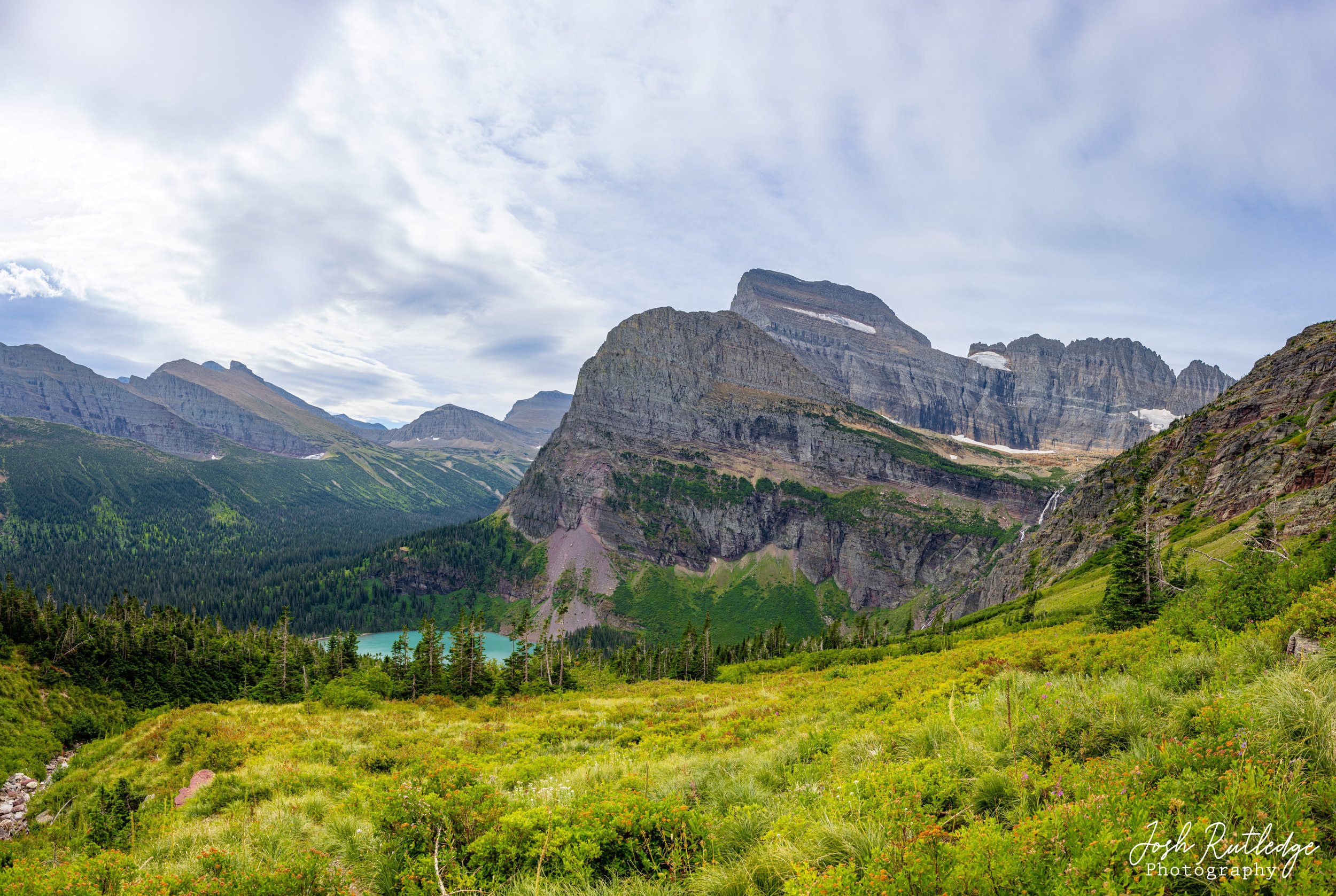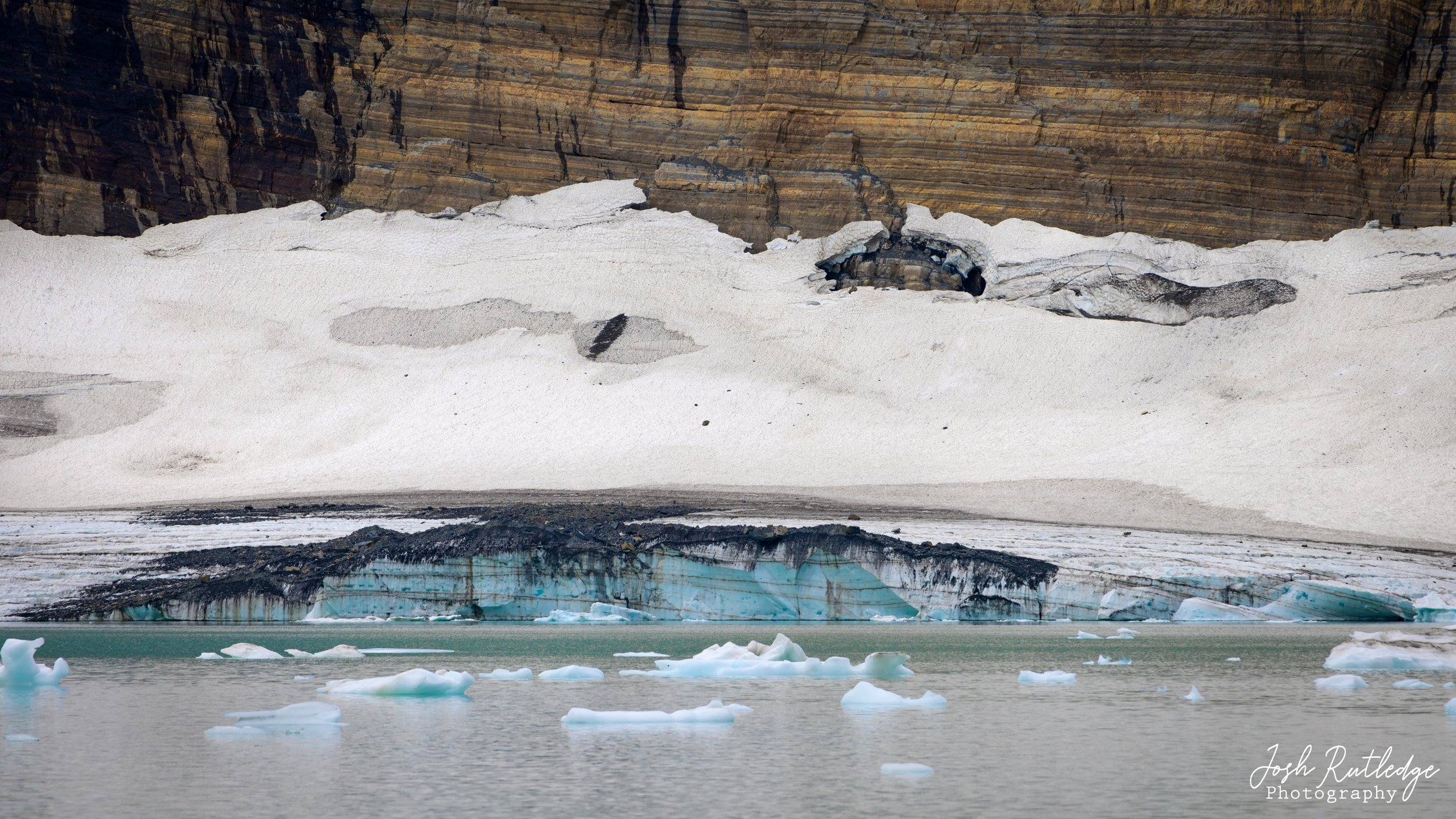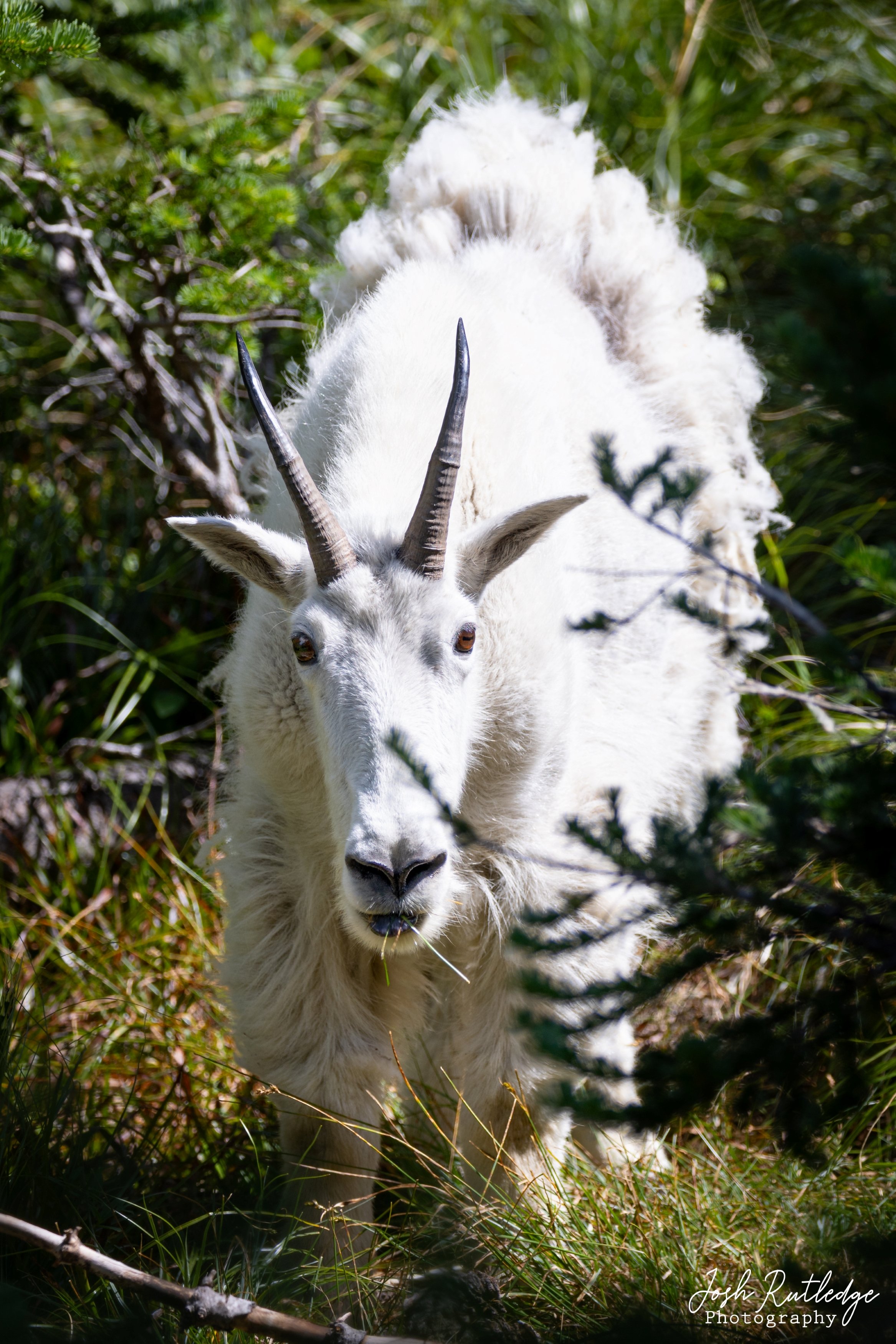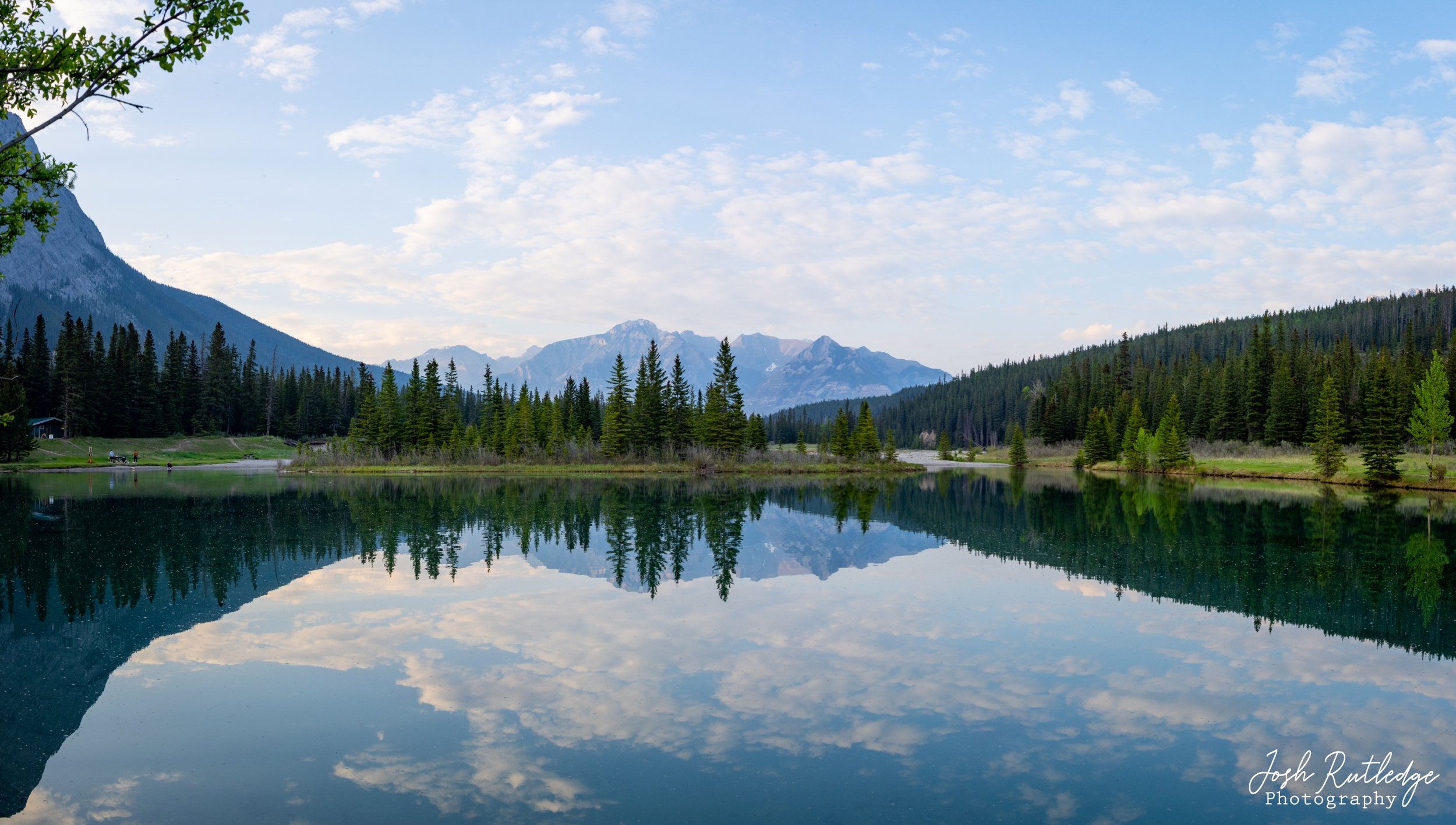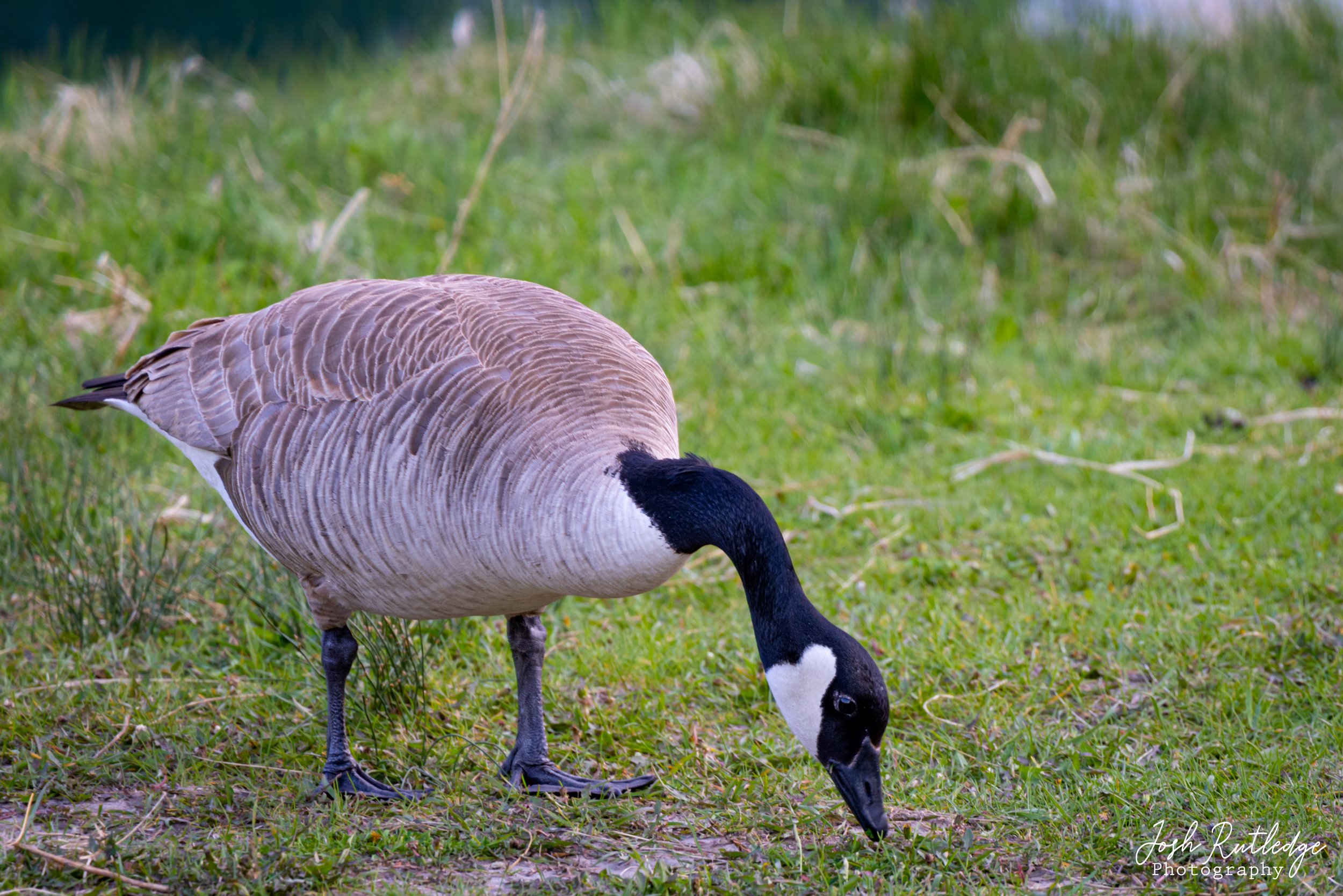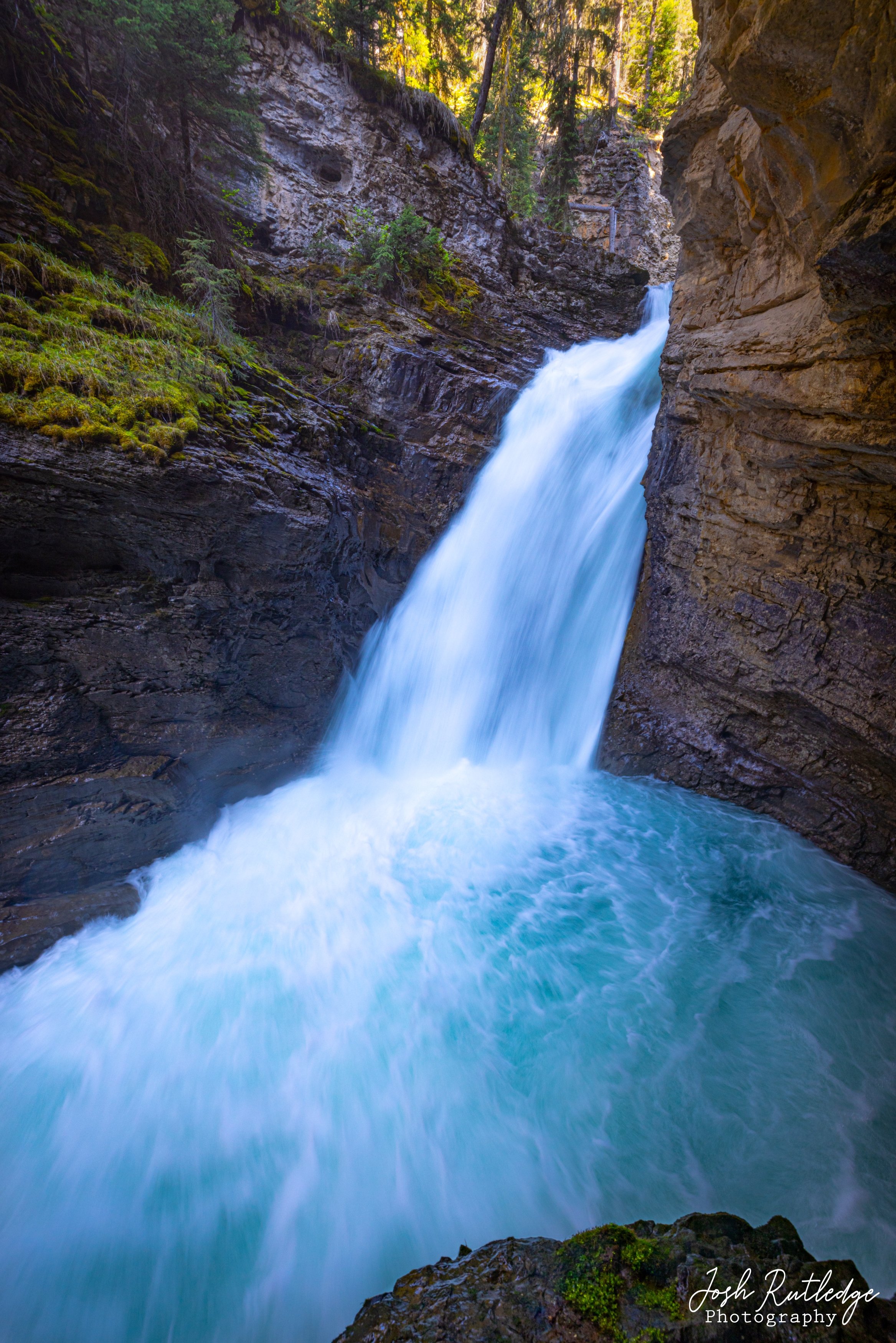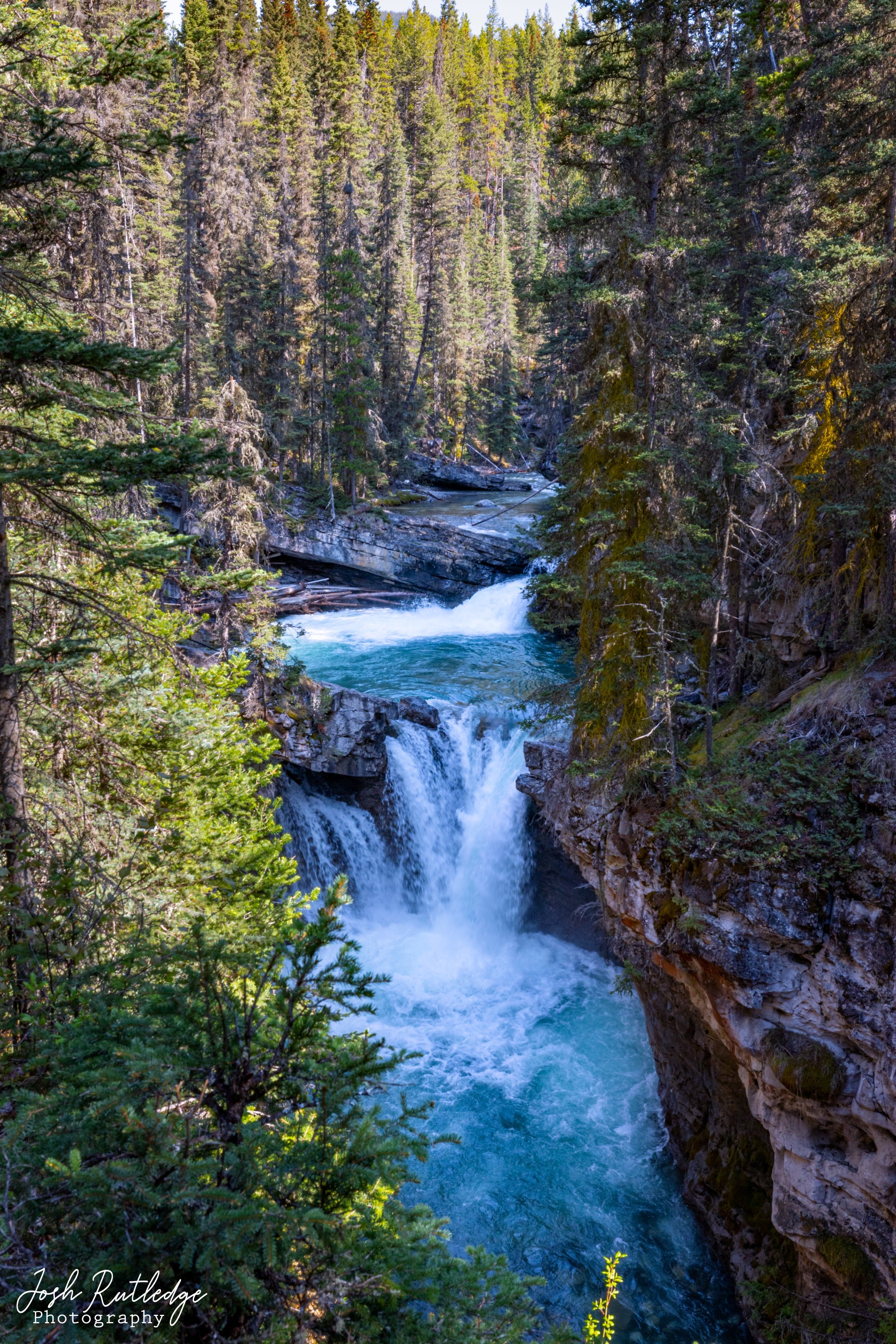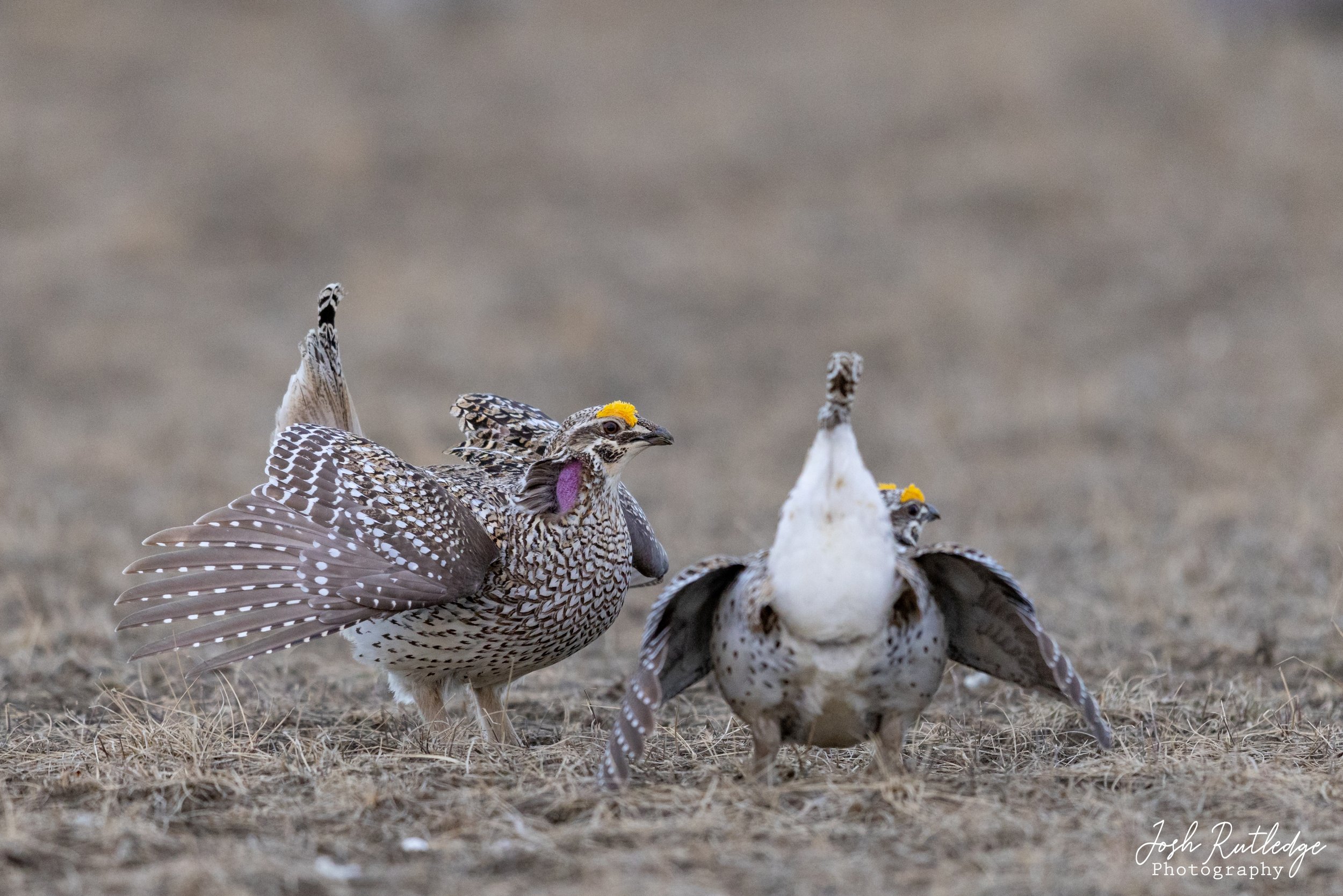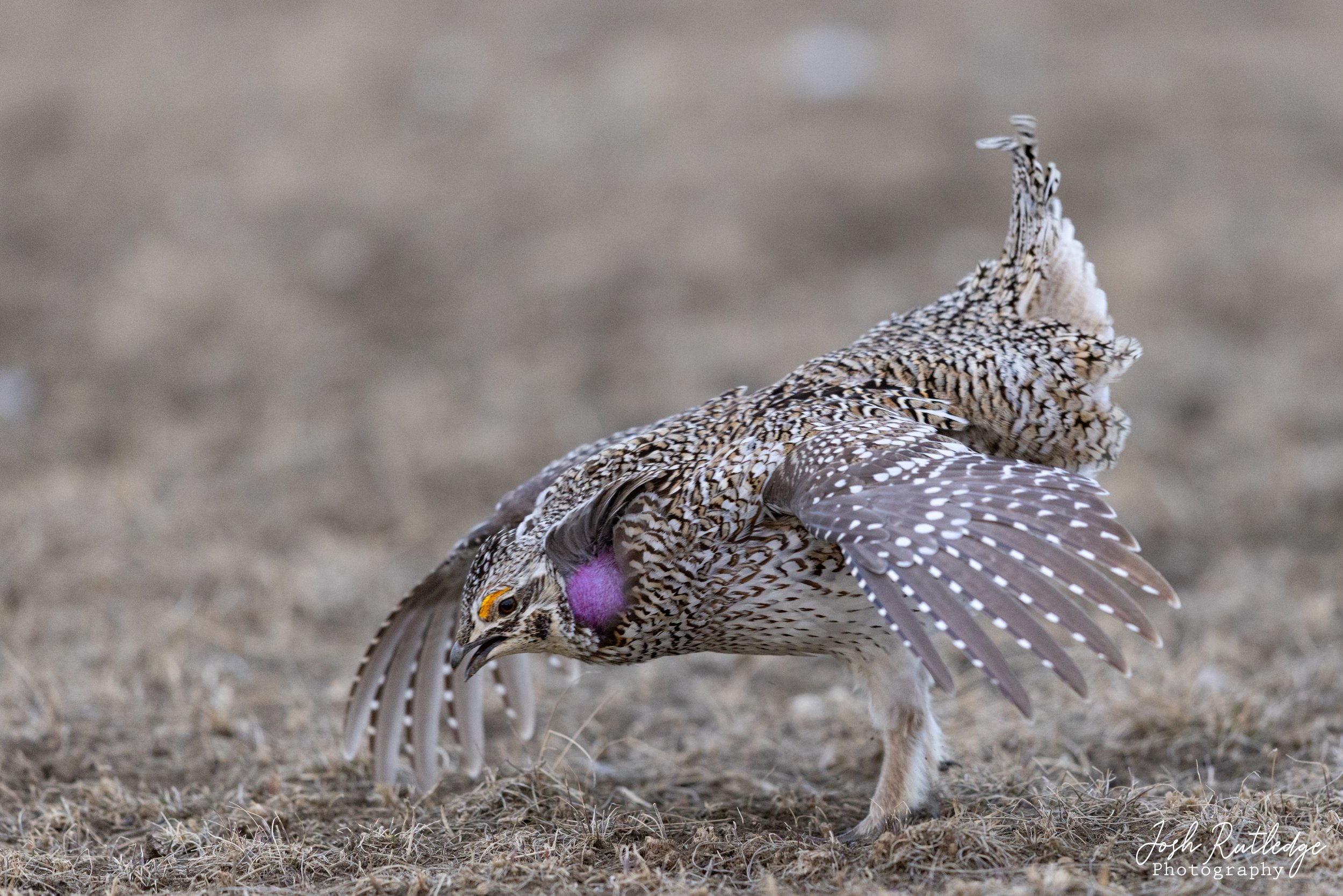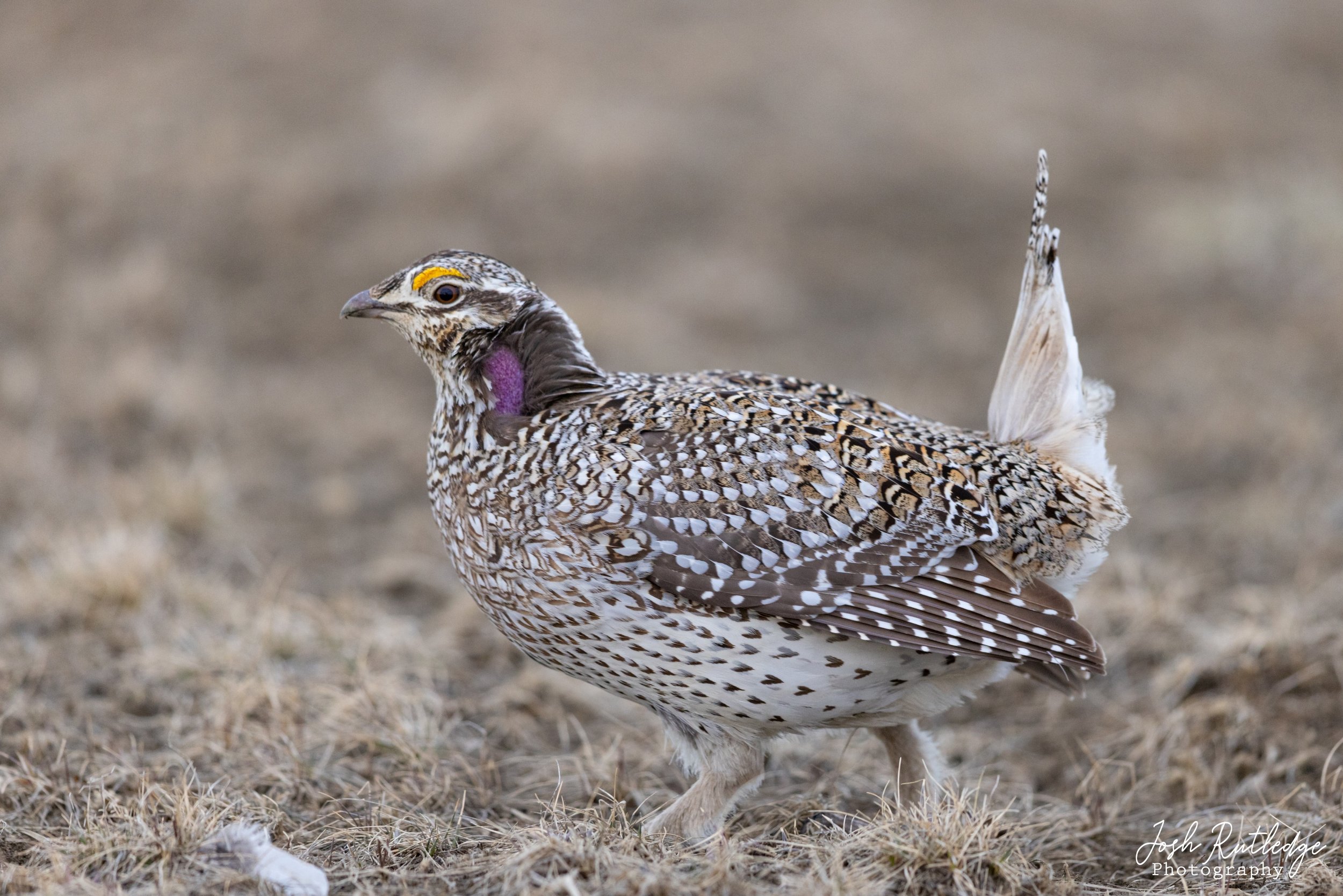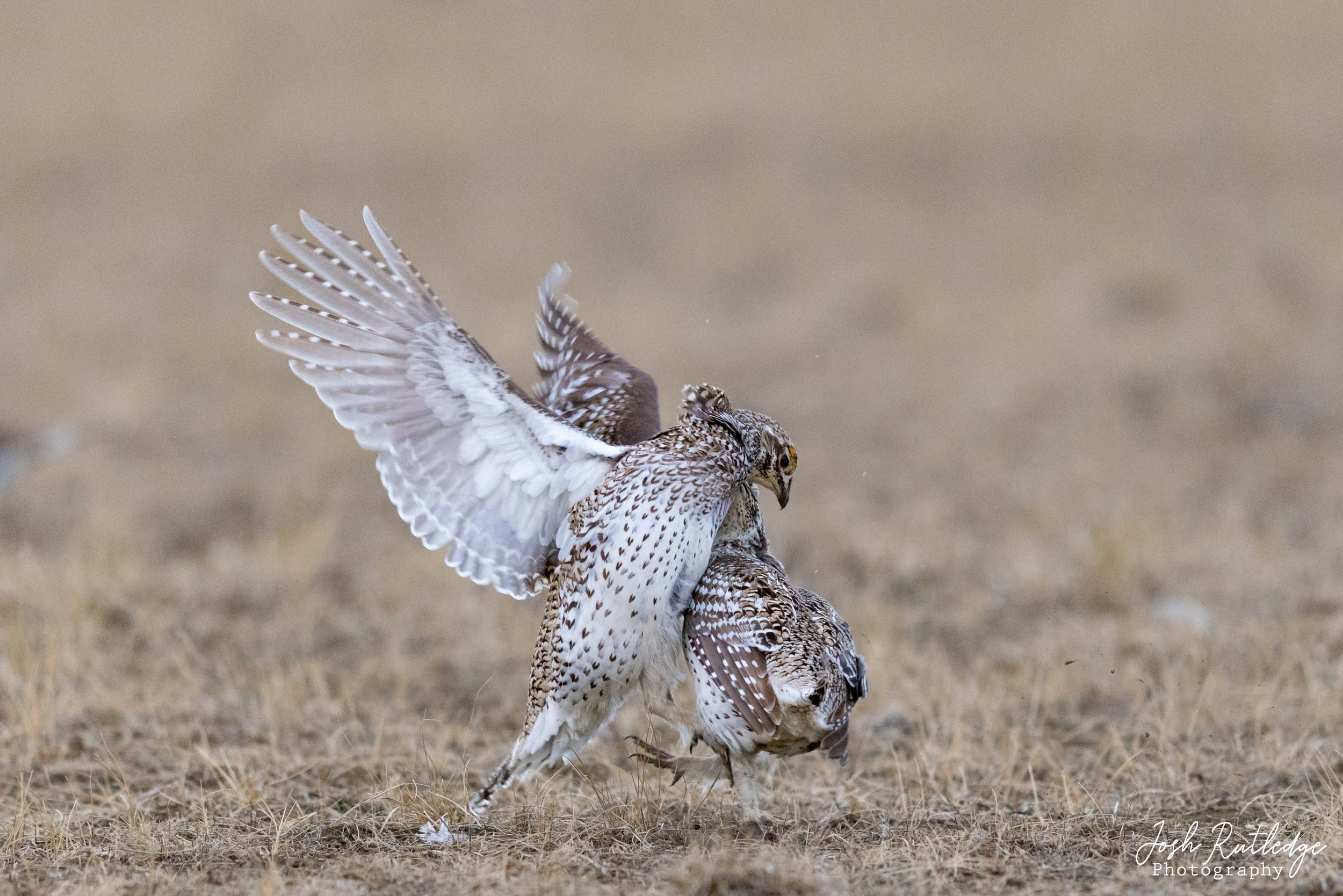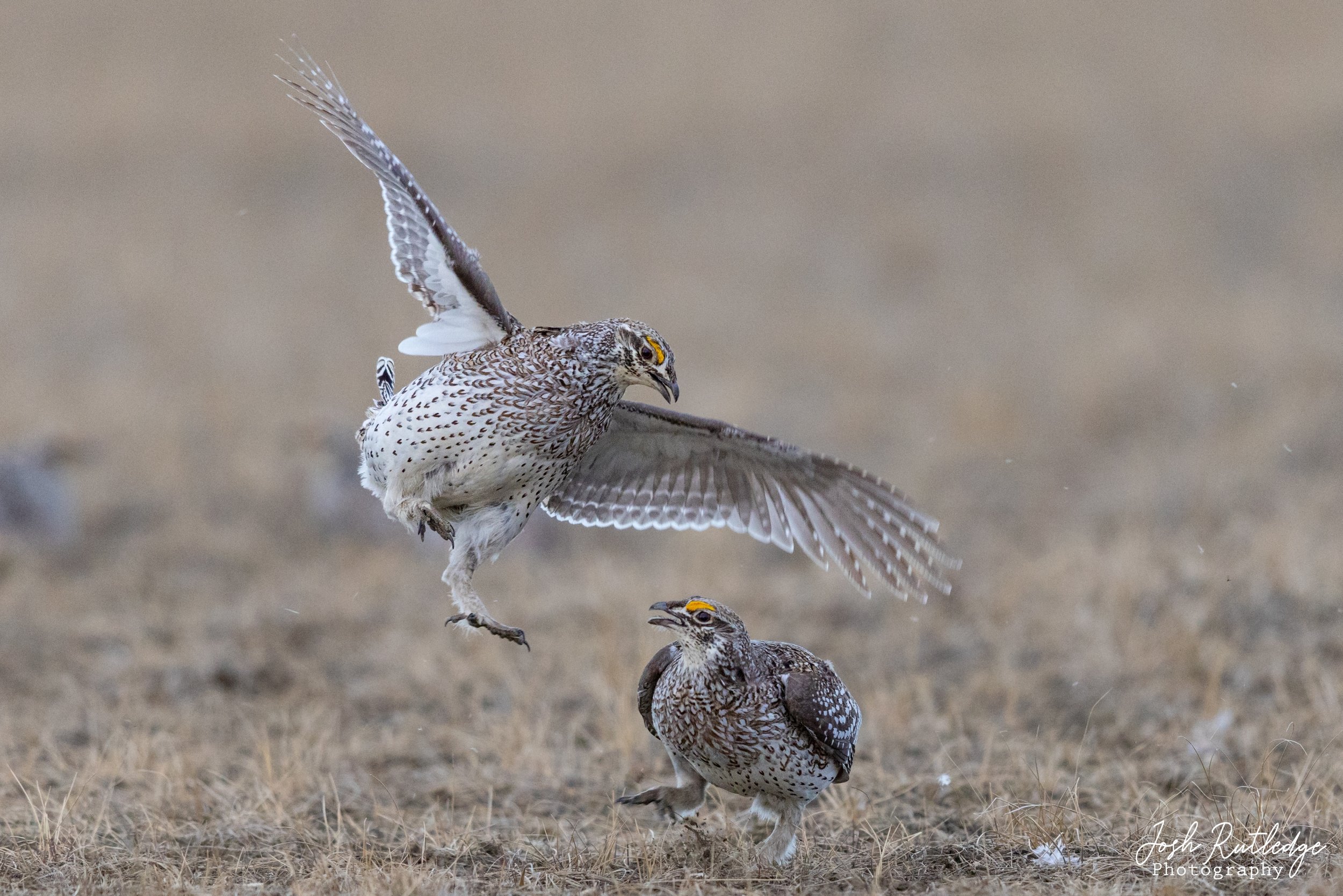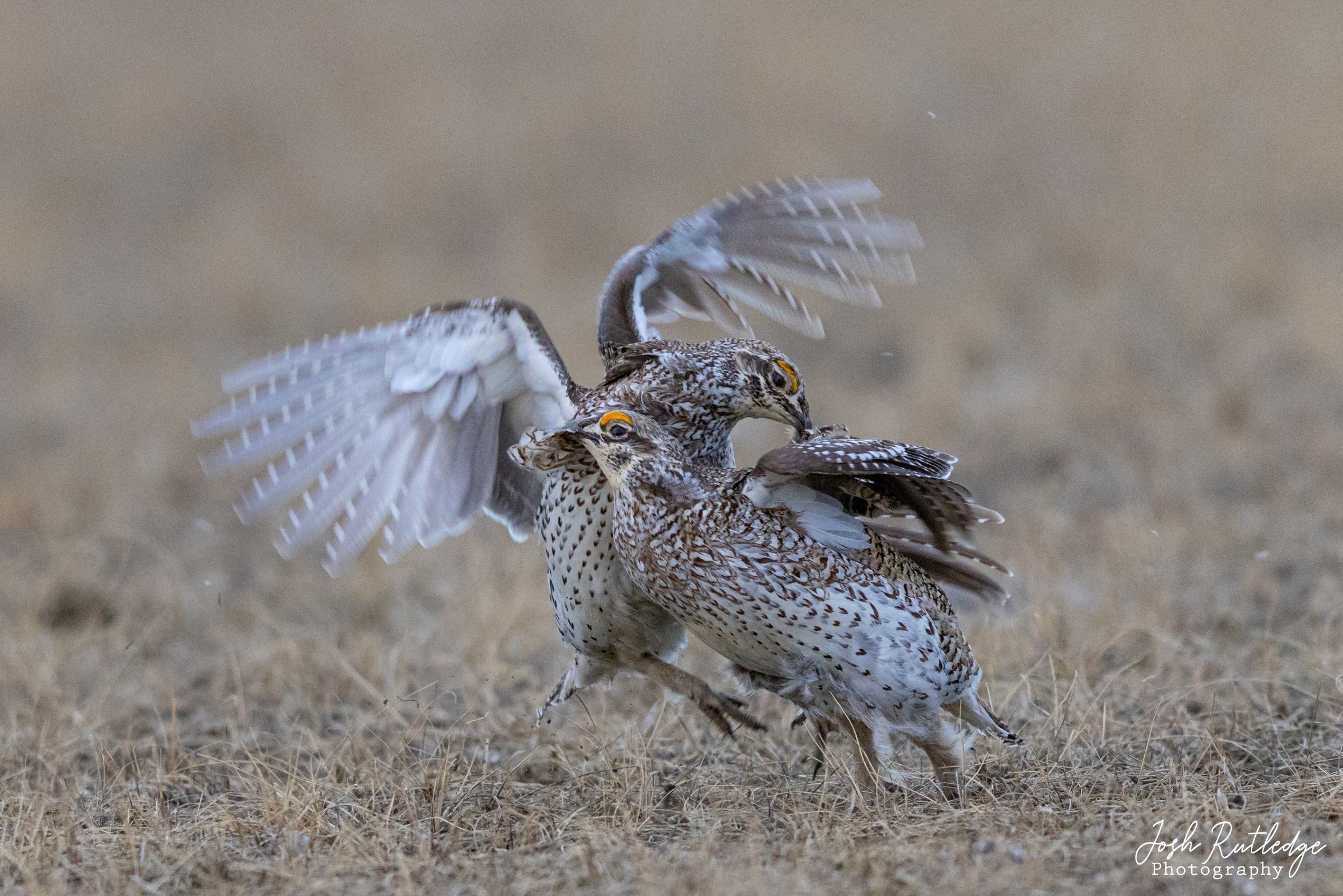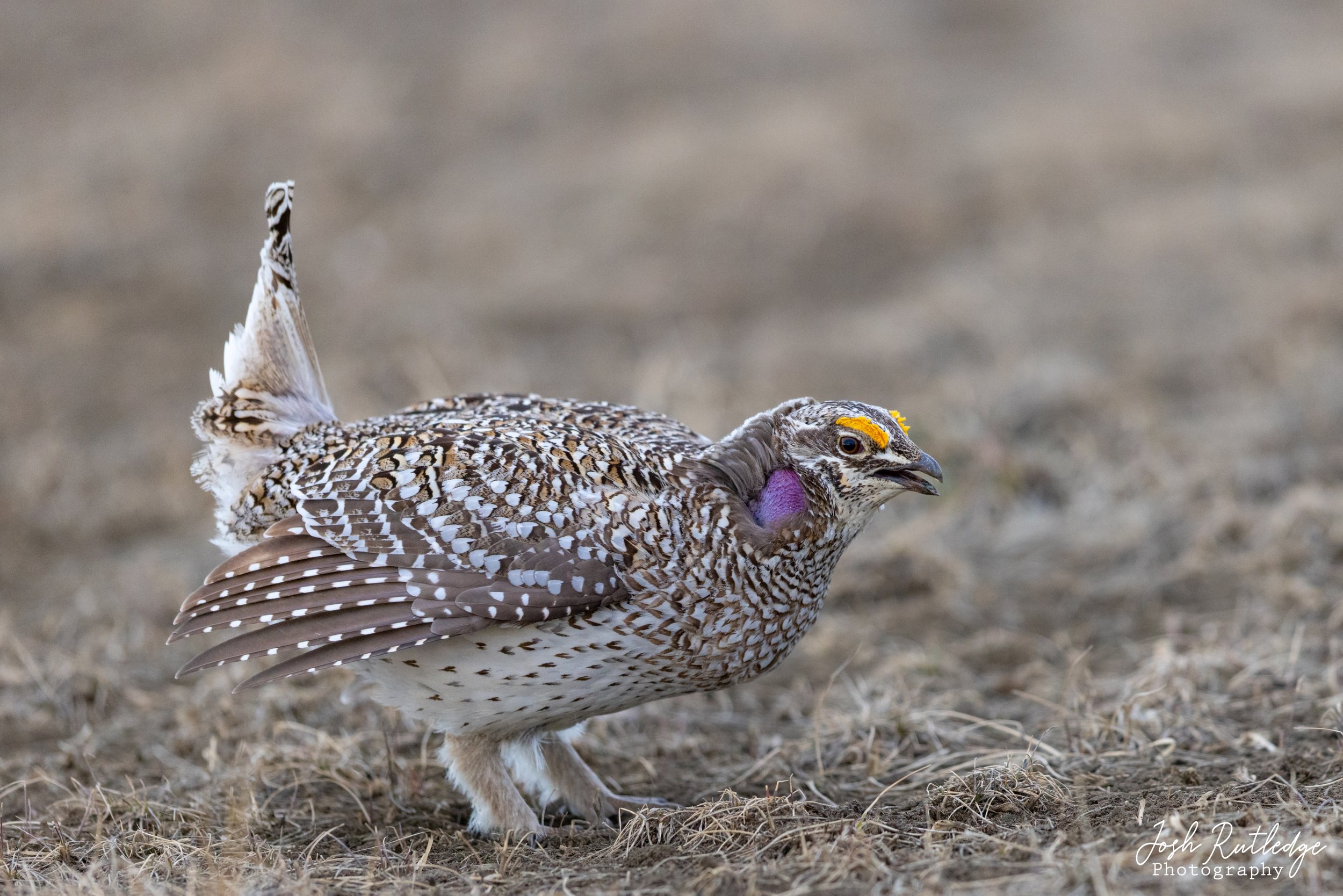My sister Melissa and I recently returned from an amazing trip to Churchill, Manitoba, Canada to photograph polar bears. Churchill is located on Hudson Bay, and it is an area where polar bears congregate every fall while they wait for the bay to freeze over so they can go out on the ice to hunt for seals. The reason the bay starts to freeze there first is actually because of the Churchill River that empties into the bay. The fresh water in the river freezes much earlier than the salt water, so the ice from the river collects in the bay and that helps the bay freeze over faster than it would otherwise. Typically the end of October or early November is considered the prime time to view the polar bears, so we scheduled our trip accordingly. Once the bay freezes over, the polar bears disperse and are no longer in the area, so you do need to be there before ice over. The exact timing of the freeze varies from year to year and is trending towards later in the season. You can find polar bears around Churchill earlier in the fall however, but maybe just not in as high of concentrations. Pregnant females will also hibernate in the area, especially in the nearby Wapusk National Park. The local guides we talked to said the bears seem to be showing up earlier and earlier however, and it is not uncommon to see them even in July now. Churchill is also known for its summer concentration of beluga’s whales and the Northern Lights. So if you time it right, in maybe late August or so, they said you might be able to get the trifecta and see polar bears, belugas and the Northern Lights all in one visit! Speaking of the Northern Lights, we had cloudy/snowy conditions most of the time while we were there, so we never did get to see them. We did see them on our trip home while on the train however. They consider their “Northern Lights season” to be later in the winter or even early spring when the skies tend to be less cloudy. You have the chance to see them there almost 300 nights out of the year though. We have been lucky the last couple of years here in Montana that we have had some spectacular Northern Lights shows, so we were not quite as disappointed that we did not get to see them. If you are interested, I do have a couple of blog posts from our events here.
We started planning this trip almost a year ago. I really should say my sister Melissa started planning this trip. She was a rock star and made almost all of the arrangements, so I owe her a big thank you for that. We (my wife, my sister and I) visited Katmai National Park in the fall of 2023, and I think that might have served as an inspiration for this trip. I think having photographed the brown bears in Alaska, the polar bears kind of felt like the next natural step. We were already aware of Churchill at that point, and it seemed like the most accessible option to see the bears. The other popular option is Svalbard in northern Norway. I do have a blog from Katmai National Park as well if you want to check it out.
As soon as we started researching the trip, we discovered that much like Katmai National Park, you cannot drive to Churchill. You have to either fly in or take the train. The most common jumping off point for either option is via Winnipeg, Manitoba. If you decide you want to take the train, there are other options as well, which is what we chose to do. We decided we would drive to Thompson, Manitoba and get on the train there. The drive to Thompson is actually farther than driving to Winnipeg for us, but the train ride would have been a lot longer, so we decided to save time by driving ourselves. Obviously the fastest option would have been by plane out of Winnipeg, but that was a fairly pricey option. We also had concerns about trying to get that much gear on the plane, since besides all of our camera gear, we knew we would have a lot of bulky cold weather gear as well. Plus the train just sounded like a bit of an adventure in itself. Once we checked the train schedule, knowing we wanted to be there around the end of October or early November, that helped us pick our dates and we were able to reserve a hotel room and book some tours in Churchill. I would recommend booking those things as soon as you know you are going, as they fill up fast.
We started our trip from my sister’s house in Lewistown, MT. I drove over the night before from Great Falls, so we could get an early start. According to the mapping app we used, it was going to be a little over 16 hours of driving time to get from her house up to Thompson. We knew with the shorter fall days we would need to break up the drive over a couple of days. We decided to aim for the small town of Nipawin in Saskatchewan as our first stop. We booked a hotel in town so we would be sure to have a room when we got there. By the time we got through the border and made a few stops, it was probably about a 12 hour day. Speaking of the border, we crossed at the Morgan/Monchy Port north of Malta, Montana. It is a very small crossing, so you may want to check ahead to be sure it will be open when you want to make the crossing. We noticed it was only open from 9 to 5 on weekdays, so we were lucky we were going on a Thursday and we got there after 9am. The crossing was very easy, they just asked a few questions and checked our passports, and we were on our way. We then continued north eventually going through Saskatoon and then east over to Nipawin, arriving there shortly after dark. We stayed at the River Inn Hotel and there was a little chicken joint called Chicken Delight downstairs that we decided to have dinner at. It worked out pretty well staying there. It was Halloween, so there were a few people around trick or treating, but it was still pretty quiet.
I love Tim Hortons, I wish we had them down here.
The next morning we got up early and started on the second leg of our journey to Thompson. Of course we had to stop at Tim Hortons to get some coffee and a donut. When in Canada! Not far out of Nipawin the road turned into gravel. This was obviously not ideal and was probably something we should have looked into a little closer. We did not have any issues, and as gravel roads go, it was a pretty well maintained road, but it was still not the best idea. The road traveled through a kind of a conservation area, so there were a lot of trees and wetlands that were interesting to drive through, but not a lot else. Eventually it did turn back into pavement as we got closer to crossing into Manitoba and eventually to The Pas. After a couple of other stops along the way, we arrived in Thompson in the early afternoon. The train was scheduled to leave around 5PM, so we had plenty of time to grab some dinner and get settled in at the train station. We took a chance and decided to leave our car parked at the train station. This is probably not your best option however, as even the train station recommends against it. The train station is a ways out of town and is kind of in an industrial area with no one really monitoring things. We were told there are some options for places where you can park your car in town that are more secure for a small fee or donation. We heard that maybe the fire department would let you park there, maybe the police station, and we also heard from some fellow travelers that one of the hotels in town would let you as well. You can then either take a taxi or a shuttle service out to the train station. We did not have any issues parking there, but as I said, if we did it again we would have probably found some better options just to be safe.
Selfie of Melissa and I on the train.
We boarded the train shortly before 5PM. The train station there is small, and the boarding process was fairly informal and in my opinion a little chaotic. I don’t know if that is typical or not, but that was our experience. The train was pretty full, I would say maybe a little over half appeared to be fellow tourists to Churchill and the other half were locals that use the train to get between some of the smaller villages along the way. Since it was going to be an overnight trip, we decided to pay more and we got a sleeper car. I don’t know that this was necessary, but the extra privacy was nice. If you are looking to save some money there are cheaper options (even some that include a bed.) The “room” is pretty small, especially once the beds are pulled out, but it was adequate. This line is very stripped down service wise however, so don’t expect served meals or some of the amenities you would normally get taking the train elsewhere. There were some snacks available and you could buy some “hot food”, but it was just prepackaged items that were microwaved for you. Since we had already eaten an early dinner before we got on the train and had brought some snacks with us, we were fine. The train did include a domed car that was nice for some places where you could stretch out a little bit and see some of the scenery. Of course, the train left late enough in the day, that this time of year it was dark within an hour or so of us leaving the station, so there was not a lot to see. If you were traveling by train in the summer when the days are longer, I could see this being more of a highlight. My sister did get up on our return trip to go into the dome, and she was able to see the Northern Lights!
The front of the Churchill Train Station. It is a fairly historic building and has been restored and updated.
Early the next morning we arrived in Churchill. The train was scheduled to arrive around 9AM, but we arrived before 8AM. They have been making improvements to the line, and they said their goal is to try and start having the times reduced by quite a bit. In fact, they pushed our departure time back by an hour on our way home and left the arrival time the same, assuming we would make up an hour in travel time. But they obviously still have some work to do, as we ended up being almost exactly an hour late coming back. The train to Churchill does have a bit of a history and it can be a difficult route to keep intact because of the muskeg that is always thawing and freezing causing the land (tracks) to heave and sink. The line was actually shut down all together for a few years because the train operators said it wasn’t worth the efforts, but the Province of Manitoba agreed to take over maintenance of the line and VIA contracts to run the trains for them. I think that may play into why the services offered on this line are reduced as well. If you are planning on taking the train, I would make sure you check in regularly to make sure the schedules doesn’t change, as it seems to be a bit of a moving target right now.
A sign inside the train station talking about the history of the station a bit.
Once we departed the train and got our checked baggage, we hung out in the station for a bit of time waiting for our shuttle service to the hotel. There is actually a nice little visitors center inside of the train station, and they have someone from the park service that will provide you with information from right in the train station. They also had some maps of the area that were helpful. We eventually found out that our ride was actually there the whole time, but we didn’t realize it. The hotel we were staying at, the owners actually have a couple of different hotels in town, so the name on the shuttle was not what we were looking for. Churchill is a small place, so we found that almost everyone knew everyone, and oftentimes there was kind of cross pollination between things. For example, as I mentioned, the same people owned multiple hotels, and the son of the owner was actually the shuttle driver for us and he owned a restaurant in town, amongst other duties. And his wife was one of our guides later in our visit, and she also worked for other entities in town as well. The hotel owners also own the car rental service in town. Everyone we met was very nice, but there was a fairly casual and informal way about things.
The sign for the Bear Country Inn.
After we got the shuttle situation figured out, he gave us a quick tour of town to give us the lay of the land and where things were at. He then dropped us off at our hotel. We stayed at the Bear Country Inn. The owner is named John and he was a bit of a character. I actually liked him, but I don’t think my sister cared for him as much. I don’t think she quite got his humor, and that is ok. Check-in time was not until 3PM, but he was very nice and found us a room right away that morning so we could put our stuff away. If not, they do have an area behind the desk where they will let you keep your stuff. We did take advantage of that on our departure day since our train was not leaving until later that evening. The hotel is just a basic hotel, they do offer a basic breakfast, it’s nothing fancy, but it was more than adequate. Obviously we were there to experience things, so we didn’t spend that much time in the hotel anyway.
Since we were not sure how our first morning would go, if the train would be on time, and etc, we had purposely not booked anything for our first day there. I think that was actually a good choice. That gave us basically a whole day to wander around town and look at things that we might not have got a chance to otherwise. The main area of town is very small, so you can easily walk the whole thing. There are a lot of murals painted on buildings around town that are fun to find. There are a few gift shops in town, as well as a grocery store, a hardware store and a few other things like that. A lot of the gift shops are part of the tour companies and/or hotels/restaurants. There are also a lot of cool little displays in town that make for good photo ops. There are statues, rock formations, informational signs, there is an old boat closer to the bay, and lots of little things to check out.There are also a couple of museums and informational centers in town that are worth checking out, including the Itsanitaq Museum and the Polar Bears International. Farther out of town there is also the Churchill Northern Studies Center. You do need to always be aware of your surroundings when you are exploring in Churchill, even in town. The polar bears do come into town, and obviously this could be a dangerous situation. There are signs pretty much everywhere warning you to be careful and telling you not to go to certain areas.
You can select the individual photographs from the gallery below for a larger view.
On the subject of restaurants, one thing we did find out after we got there, is that it can be very difficult to get a dinner reservation in town. Unfortunately for us, a lot of the bigger tour groups book the restaurants so they can provide meals for their clients. If you were willing to eat later or share a table with other guests, sometimes you could get a reservation. Finding breakfast or lunch was not difficult however, since most people were out in the field during those times. The food we did have was all very good. And the prices, while higher than other places, were actually not as bad as I thought they might be, especially when figuring in the favorable exchange rate. We ate at the Tundra Pub our first night, and it was good. They did have a couple of large groups in, but luckily we got there early enough that they did have a couple of tables still available. We ate dinner, lunch, and I think even a breakfast at the Seaport Hotel. All of our meals there were good as well. We had hoped to eat at the Ptarmigan, which is one of the newer/nicer restaurants in town, but we were never able to get a reservation. We also never got over to the Dancing Bear, which I think is a little more casual and also offers pizzas. One evening we ended up eating at a food truck that was serving Asian inspired food. Two of our tours had lunch included, and as I mentioned the hotel offered a basic breakfast, so it was really only dinner we had to worry about.
That is probably enough about Churchill the town for now, as I am sure most of you are here for the polar bears. If you are going to be visiting Churchill, I would encourage you to do a little research about the town however and see what all it has to offer that you might be interested in, and make sure you leave yourself a little bit of time to explore those things. If you have any questions I can help with, feel free to contact me on my contact page.
You can select the individual photographs for a larger view in the gallery below.
This mother polar bear and her two older cubs were resting out in a flat near Hudson Bay.
Our first full morning we had a tour scheduled with Nanuk Operations. We joined a group of 4 that had already been in Churchill for a couple of days and our guide was named Jaime. He picked us up at our hotel and off we went. We were actually awoken early in our hotel room that morning from some poppers going off. These were conservation officers trying to haze a bear out of town. They use loud noises and other methods to try and deter the bears from coming into town. Since our guide knew a bear had been hazed out of town earlier, he first took us out to where he thought it might have been heading. This took us by the old grain port on the outside of town near where the Churchill River meets Hudson Bay. We did not actually find any bears out there, but I am glad we went, as it was the only time during our trip we made it out to that area of town. We then made our way back through town and only made it a short distance and we spotted our first bear. It was near the cemetery and was just walking across this open area between us and the only major road heading out of town. Since it was so close to town, eventually some conservation officers showed up and chased it away from town towards the river. It was still fairly early in the morning at this point, and it was a bit overcast, so from a photography perspective it was not the greatest, but it was still awesome to have our first sighting.
Our first polar bear sighting of the trip.
Our first polar bear passing in front of us.
We then headed out to “Polar Bear Alley” which is kind of the area down by the beach on Hudson Bay. There are a lot of rocks, brush and other areas where the bears like to hang out, and it forms a kind of natural corridor for them to travel, so that is why they call it Polar Bear Alley. Our first sighting in Polar Bear Alley was a mother with two cubs a ways out in a clearing. It was then I realized that I had forgotten my teleconverter at the hotel that day. I was wishing I would have had it to bring them in a little closer. They were still fun to watch, but a little bit too far away for any great photos. It wasn’t too much later that we spotted a bear walking down the beach. It was low tide, so they like to walk the tidal zone to see if there is anything washed up to eat. Our guide was able to anticipate where he thought the bear was going to go, and got us into a great position for photography. I really appreciated this about Jaime, as he did understand the photography aspect of the tour. Some of our other guides, while great in their own way, did not necessarily understand the photography side of things as much.
Mother polar bear with two older cubs again.
You can select the individual photos from the gallery below for a larger view.
Eventually we headed out to the Churchill Northern Studies Center (technically it’s “Centre” since it’s Canada) for lunch. The Center is a research facility and hosts a lot of projects and programs there. We made use of their cafeteria for lunch and also made a quick stop in the gift shop there. The Center is quite a ways out of town, and is near where there used to be a rocket testing facility. Some of the old buildings from the rocket testing days are still visible.
After lunch we headed out to the Churchill Wildlife Management Area. This area sits adjacent to the Wapusk National Park and is kind of behind the Study Center. This is also the area where the “tundra buggies” operate. I will get into those more later on. If you have a permit you are allowed to go on the established roads, but only the buggies are allowed to go to areas off road. We saw several bears in the distance coming into the management area, and eventually we found a bear relatively close near a rock formation. We watched it for quite a while and then we eventually saw a mother bear with two cubs coming across the ice in our general direction. We decided to stay in the area to see how close she would get. While we were watching her, we saw a red fox running out on the ice as well. We saw several red fox during our visit, but we never got any great photos of one. And we never saw any silver fox (a blackish color morph of a red fox) or arctic fox, which were on our wish lists of things to see. Our guides said the arctic fox has had a bit of a die off and they don’t see them as often anymore. The red foxes seem to be out-competing them there. Anyway, eventually the polar bear with the two cubs did come all the way across the ice, and after disappearing into the willows for a little while, they emerged pretty close in front of us. We were able to get a few pretty good pictures, before they proceeded to walk in front of us towards the rocks where we had seen the other bear earlier. As we were heading back out of the management area, we had a couple of other encounters with bears. We had one large bear up on the rocks that made for some great pictures. And we had one very curious bear that ended up getting way too close to us, and we had to retreat back into the van. Our guide made a lot of noise and was eventually able to get the bear to move along. It did make for a pretty exciting encounter.
Select the individual photos from the gallery below for a larger view.
All in all we had a great first day out and about. I believe we ended up seeing about a dozen bears total. We both really enjoyed our guide and had kind of wished we had booked more than one day with him. Nanuk Operations were top notch and very professional. Prior to our tour they were great with keeping in touch and making sure everything was good to go. I wish I had a link to Jaime’s social media or something so I could tag him.
We had a full 8 or 9 hour day out on the tour, so it was getting dark by the time we got back to town. I believe this was the night we had dinner at the Seaport Hotel. Our first night we had dinner at the Tundra Pub. Both meals were great. We then settled into the hotel, recharged our camera batteries and got ready for the next day.
Great White Bear Tours Polar Rover.
Our second day of touring we had a tour scheduled with Great White Bear Tours. This is one of the companies that operate tundra buggies out on the Wildlife Management Area I referenced earlier. I do need to clarify that “Tundra Buggy” is a trademarked name. I believe Frontiers North owns that name. So Great White Bear calls theirs “Polar Rovers.” There is a third company permitted to operate in the Management Area, but I cannot remember what they call theirs now. The term “tundra buggy” is kind of like using Kleenex though, everyone just calls them all tundra buggies regardless of what company is operating them. The buggies are mostly all based off a fire truck chassis they build up for the vehicles.
A plaque on the back of the seats of the Polar Rover.
Great White Bear picked us up at our hotel, and after picking up several other guests around town, we headed out to their facility near the Management Area. They have built a ramp out at their facility that rovers can back up to, so you are able to walk off the shuttle and directly onto the rover without having to climb up and in. The rovers sit high up in the air, so this is a nice setup. I think the other companies have you climb up onto a loading dock to get onto the buggy. The Great White Bear rovers do have a private flushing toilet on board, so that is nice. They said that was a fairly new feature of their rovers, so they are not sure if the other companies have something similar now too or not.
Looking back at the Great White Bear Tours facility as we are pulling away.
We pulled away from the loading area and headed out into the Management Area. The rovers are built to go over ice, rocks, mud and etc, so they move pretty slow and the ride can be a little rough. Since they sit up so high, they do tend to rock back and forth a lot too. I mention this, because if you are prone to motion sickness, this might be something to be aware of. We did not have anyone get sick on ours, but there was a passenger on ours that had been out previously and they stated someone did get sick on their other tour.
A polar bear walking in front of another Polar Rover.
We had a great day out on the rover. We had several close up interactions with bears that would come right up the rover. Other bears would kind of keep their distance. Every bear kind of has its own personality. They did serve lunch on the rover, which consisted of beef stew, a dinner roll, cookies and a drink. They also had opportunities to get hot chocolate and coffee. The spot we chose for lunch was good, as the temperatures were just warm enough by the afternoon that some of the ice was melting. This created some pools of water on the ice and as the bears would walk out onto the ice you could see the bear’s reflections in the water. None of my pictures turned out all that great, probably because of the temperature differences between the cold ice and the warm air was creating a mirage, but it was still cool to see. Eventually we headed back to the loading area and we saw a few bears on our way out. I believe we saw around a dozen bears or so again this day.
You can select the individual photos from the gallery below for a larger view.
From a purely photography perspective, the tundra buggies are probably not the most conducive to getting the best shots. But you do see the bears in a different way then you would otherwise, so I think it’s still worth spending at least one day touring this way. Once we got back to the loading area, we loaded the shuttle and they took us back to our hotel. We ended up grabbing some dinner at a food truck after again not being able to get a table at a restaurant.
Nearing sunset over the Wildlife Management area at the end of our day on the rover.
Our last day in Churchill we had a tour scheduled with Sub-Arctic Tours. Our train was not scheduled to leave until 7PM that night, so we had plenty of time to fit in one more full day tour. Our guide was a Churchill native named Stanley. He was a really interesting guy who had done a lot of different things during his life. He was in the military and had been on some award winning marksmanship teams. He worked at the large grain port in town as a younger man and had retired from working as a maintenance worker at the large community building in town. He took us around to a lot of little spots around Churchill that we had not seen yet. This included the Polar Bear Holding Facility, known as “Bear Jail” and a crash site of a plane that was overloaded back when the military base was there. So that was great. I guess I should have mentioned that it was a cold blizzardy day. It was the only day that really felt cold, we had been pretty lucky up to that point. Sub-Arctic Tours has a couple of different options for tours, but we chose an option where we were just in a pickup, hoping that would ensure it was just the two of us (and the guide), and that was the case.
Two male polar bears sparring with each other. They were not seriously fighting, they were just kind of pushing each other around.
The blizzard conditions were not ideal for photographing wildlife. I don’t think our guide had quite as good of understanding of photography either. He was great at knowing the local areas and finding wildlife, but he didn’t really understand as well getting us into good situations for getting photographs of the wildlife. I guess we could have been a little more vocal about what we wanted some of the times, so some of it is probably on us. We did eventually come across two male polar bears sparring with each other. So that was probably one of my highlights from the trip. The wind was blowing so hard, and there was so much snow swirling around, that it was very difficult to get any good photos. After a while a lot of other people and tour groups found the location, and it got pretty crowded. We eventually left to see what else we could find, but we determined that it was probably the best show in town. But when we went back, the scene had got even busier, so we were not even able to park anywhere near where the bears were. We saw several foxes that day, but we didn’t get any photos and we did find some ptarmigan out feeding in the storm. I did get some photos of them, but between the wind and the blowing snow none of them turned out great.
You can select the individual photos for a larger view from the gallery below.
This polar bear was staying out of the storm by sleeping next to some rocks.
We ended the day out in the Wildlife Management area again. We finally found a bear that was riding out the storm by just sleeping in the rocks. It would occasionally raise its head to look around, but that was about it. Our guide then took us back to our hotel and we just kind of hung out until it was time for a ride back to the train station. John, the hotel owner, gave us a ride back personally, so that was nice. We hung out in the train station for a bit, before starting our journey back home. To avoid the gravel road we ended up on going up, we took a more southerly route out of Thompson. This route took us through Regina and Moose Jaw, but eventually coming back through the same port of entry north of Malta. On the way home we stayed in the town of Swan River. We did not have the best hotel experience there, so I am not including that location in this blog.
Going into this trip I struggled with what to bring. From a photography standpoint, of course I wanted to include everything but the kitchen sink. Since we were not taking a plane, I didn’t feel quite as restrained, but I still had to prioritize what I wanted to bring. I settled on bringing my 2 Canon R5 bodies, the Canon 600mm F4 version II, my Canon RF 100-500, Canon RF 24-105 F4, Canon EF 70-200 2.8 Version III and in case we had Northern Lights I included my Canon RF 15-35 2.8 lens. I did not end up ever using the 70-200 or the 15-35. I also brought my GoPro Hero 10 Black for the wider video shots. Other wide angle shots I just used my iPhone. The real struggle I had was whether to bring a tripod and/or a mono-pod. I ended up bringing both. I really only used my mono-pod though. Getting in and out of vehicles, with other people most of the time, the larger tripod was just not very convenient. Since we did not get the Northern Lights I did not need it for that either. There were situation out in the field where I did wish I had brought the tripod instead of the mono-pod though. I probably used my big Canon 600 F4 lens about as much, if not maybe even a bit more, than my Canon RF 100-500 lens. Even though the bears are big, you still want to keep your distance, so a longer lens is nice for that. I really only used the 24-105 around town when I was photographing things. Most the time out in the field the 100-500 was still wide enough for some environmental shots.
My other struggle with packing was deciding what cold weather gear to bring. As it turned out we had unseasonably warm weather most of the time, so we over packed. I brought my big Baffin arctic boots, but only ended up wearing them one day. And I never needed to put on all of my layers or wear my heavier gloves or hat. The possibility of needing them was there however, so I am glad I was over packed instead of potentially being under prepared.
Overall I was pretty happy with the choices we made, and I don’t think there was much I would change about the trip. If we were to ever go again, knowing what we know now, we would probably do things a little different. But that doesn’t mean I don’t think how we did it the first time wasn’t still the way to go. I feel like by trying three different tours, and leaving ourselves some time to ourselves, it gave us the best chance to see all of the possibilities. Of course having another day or two would have been nice, but the cost, train schedules, work, etc are always limiting factors. I think an ideal trip would have been to have maybe one more day where we could have concentrated on finding other wildlife other than just polar bears though. There were sightings of wolverines, silver foxes, arctic foxes and snowy owls around the time we were there, and it would have been nice to have seen some of those things. Of course the polar bears are the stars, but after 3 days I would have felt ok taking a day looking for something else. The idea of going back in the summer or early fall when we could see beluga whales and potentially polar bears as well does intrigue me. I guess only time well tell if I ever make it back there or not…
If you enjoyed this blog, I would encourage you to watch the video posted below on my YouTube channel. I consider my blog and my YouTube channel to be compliments of each other and they work together to help tell the full story more completely.




































































